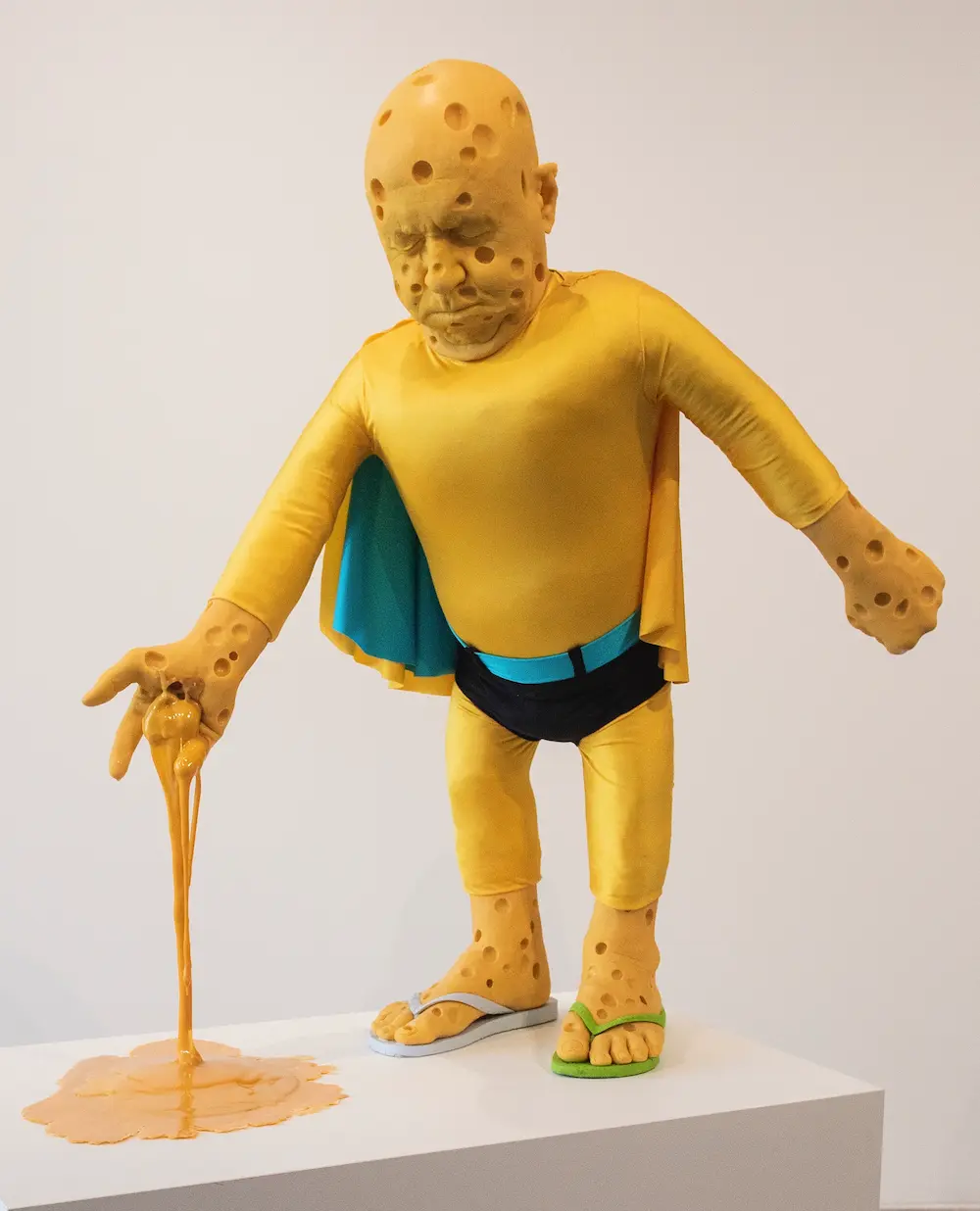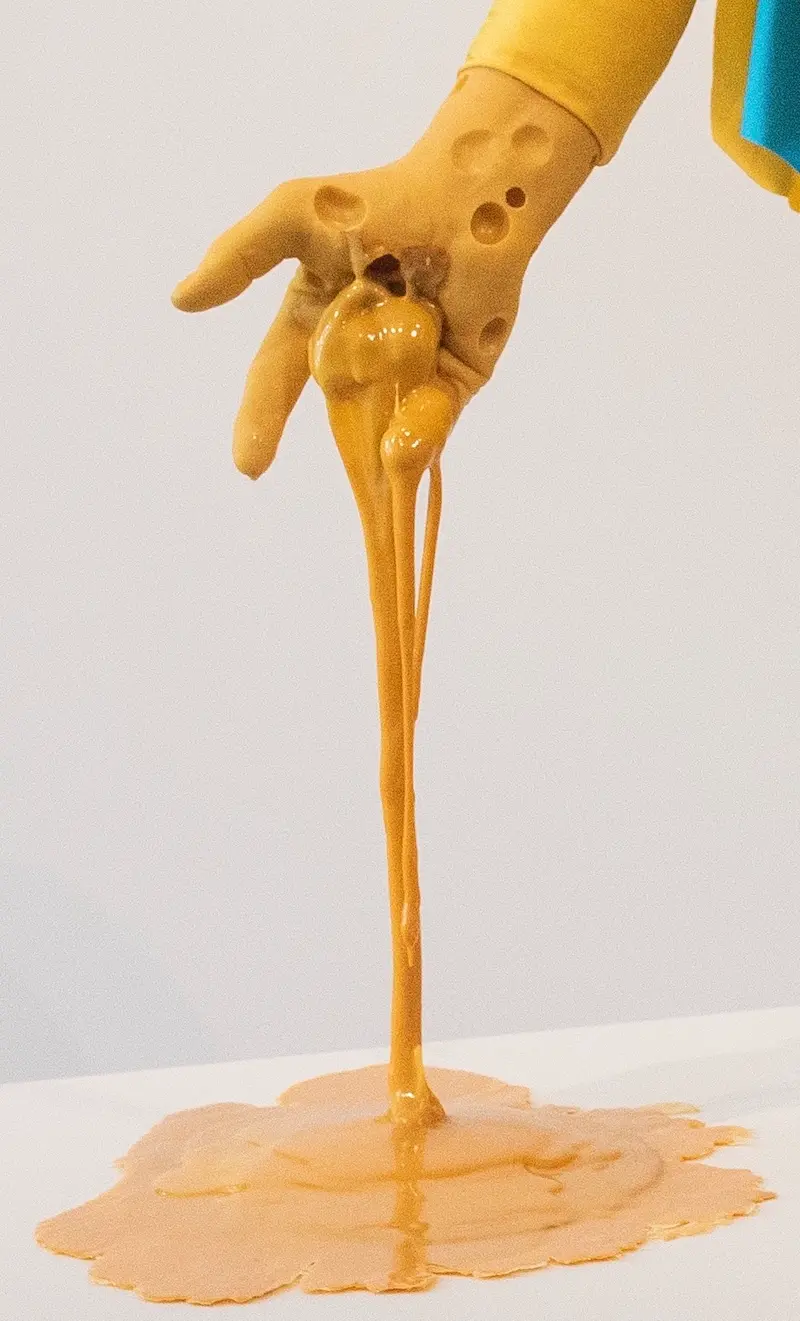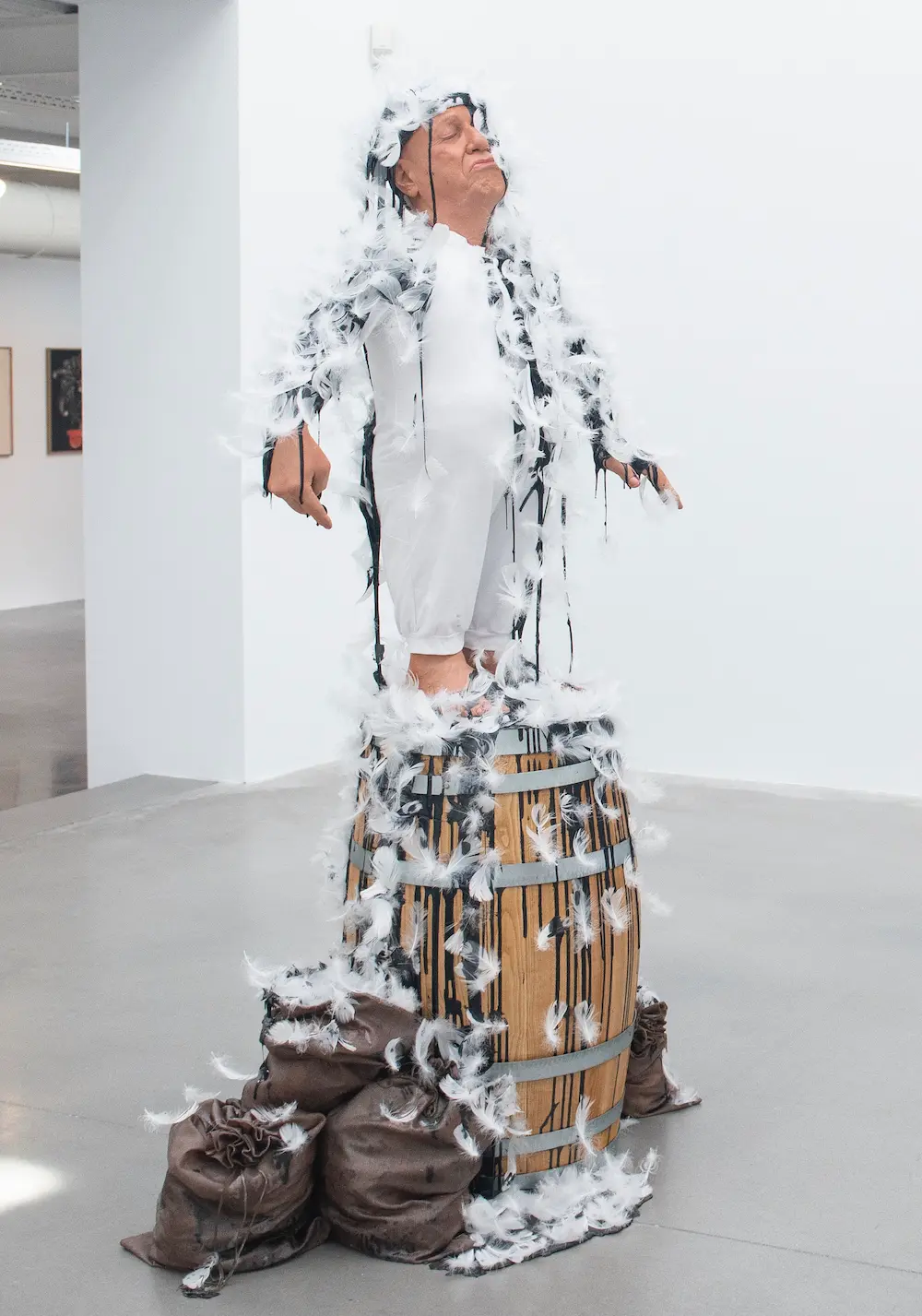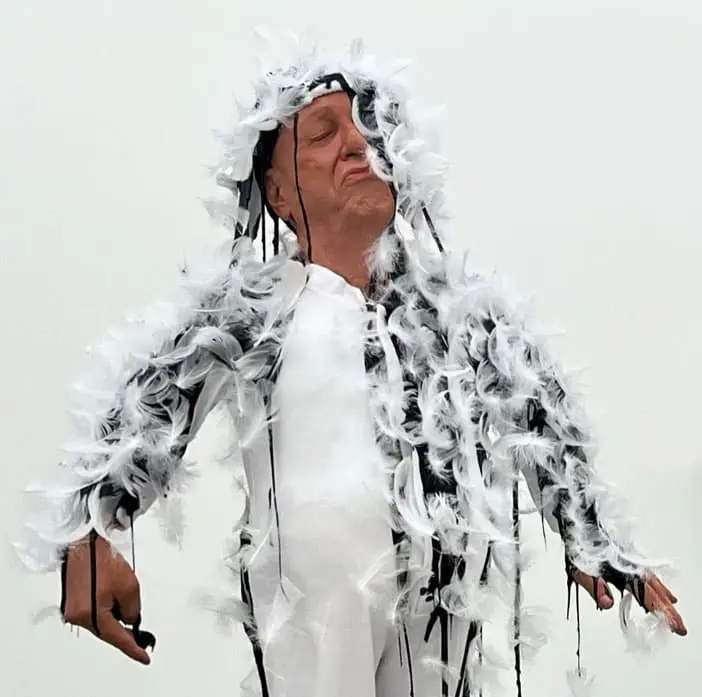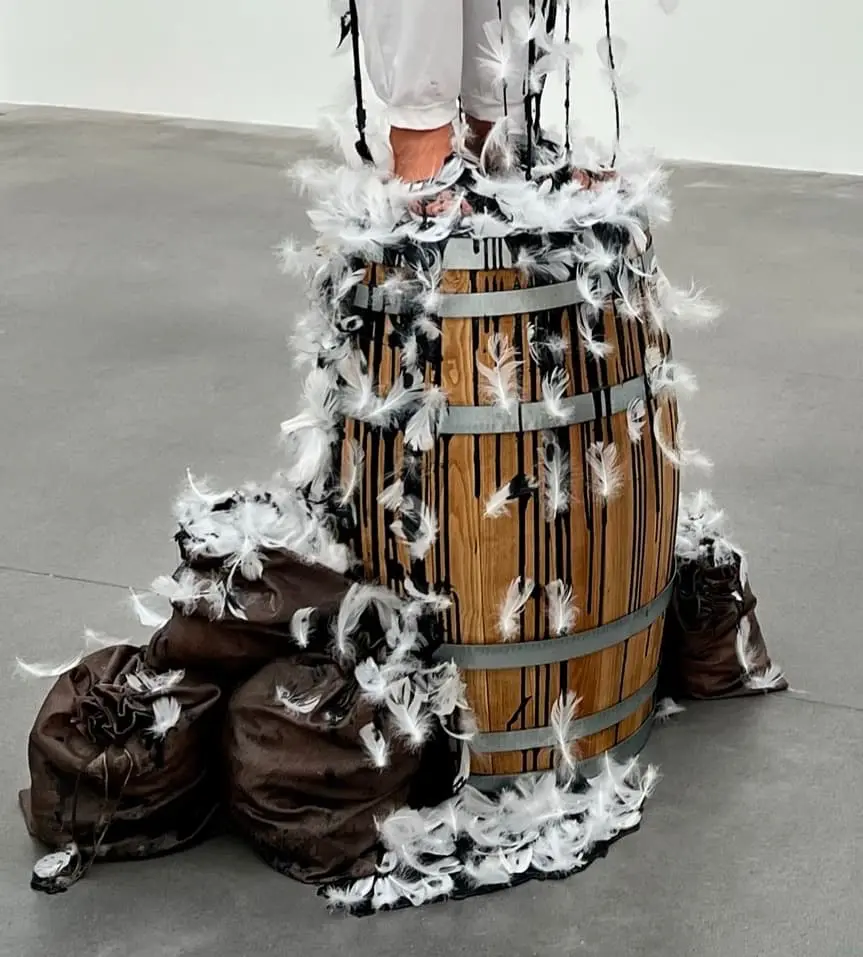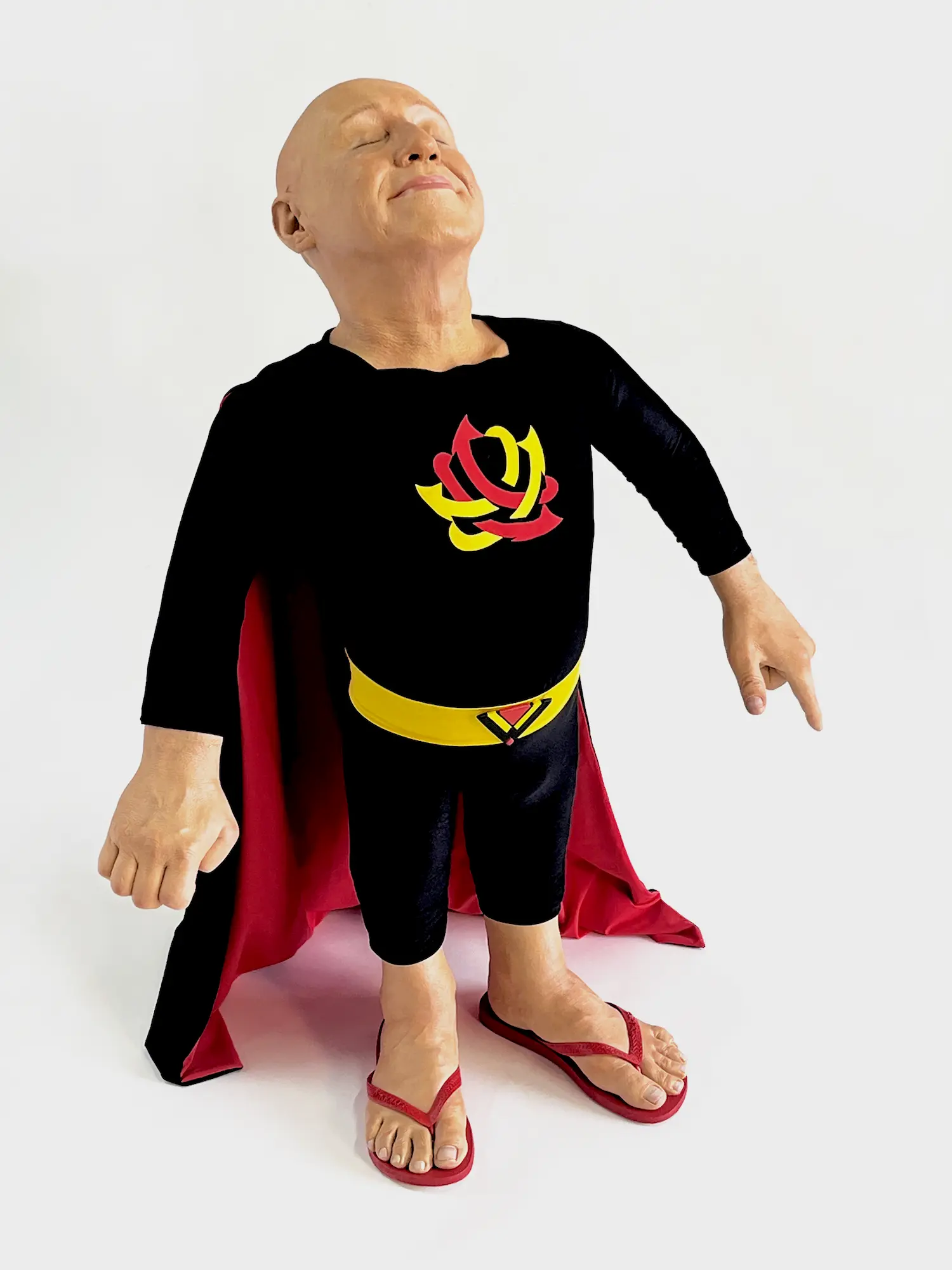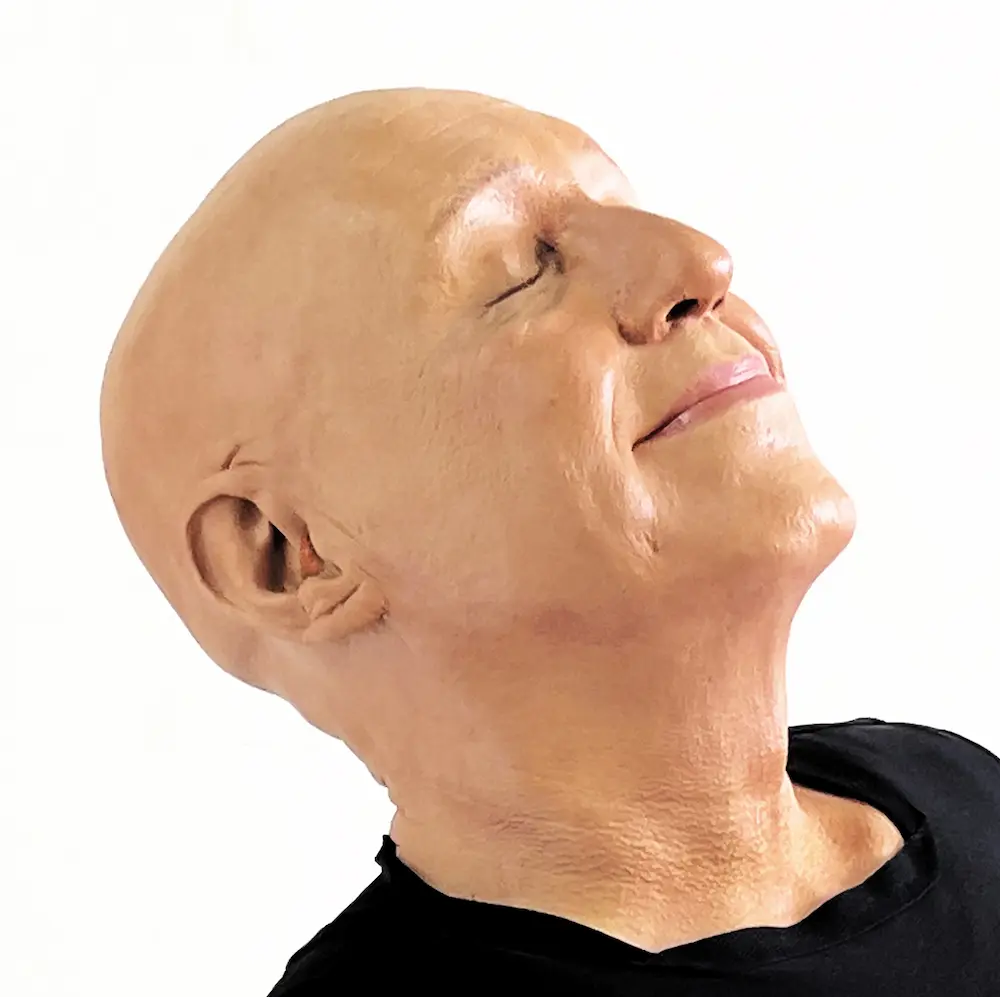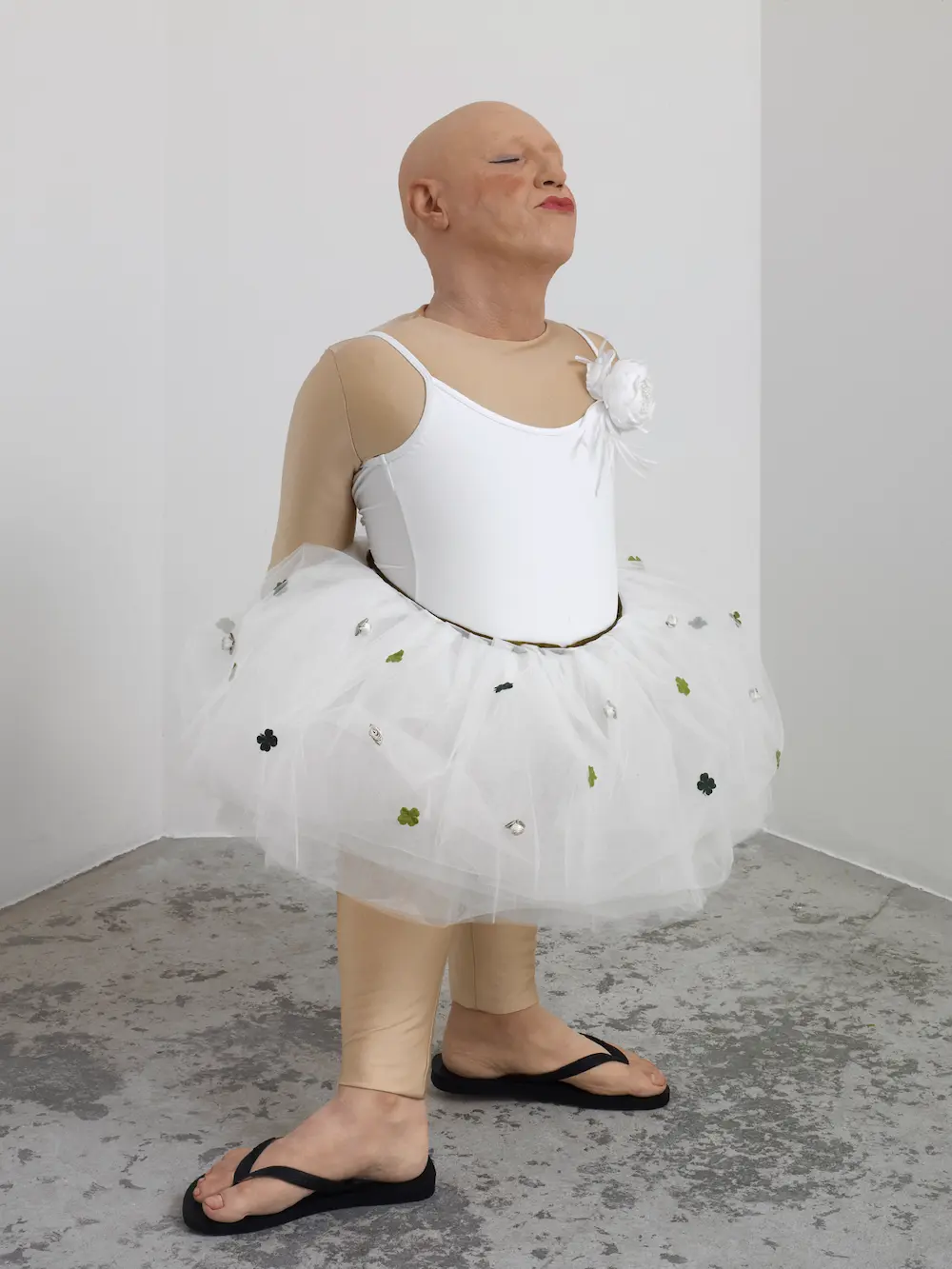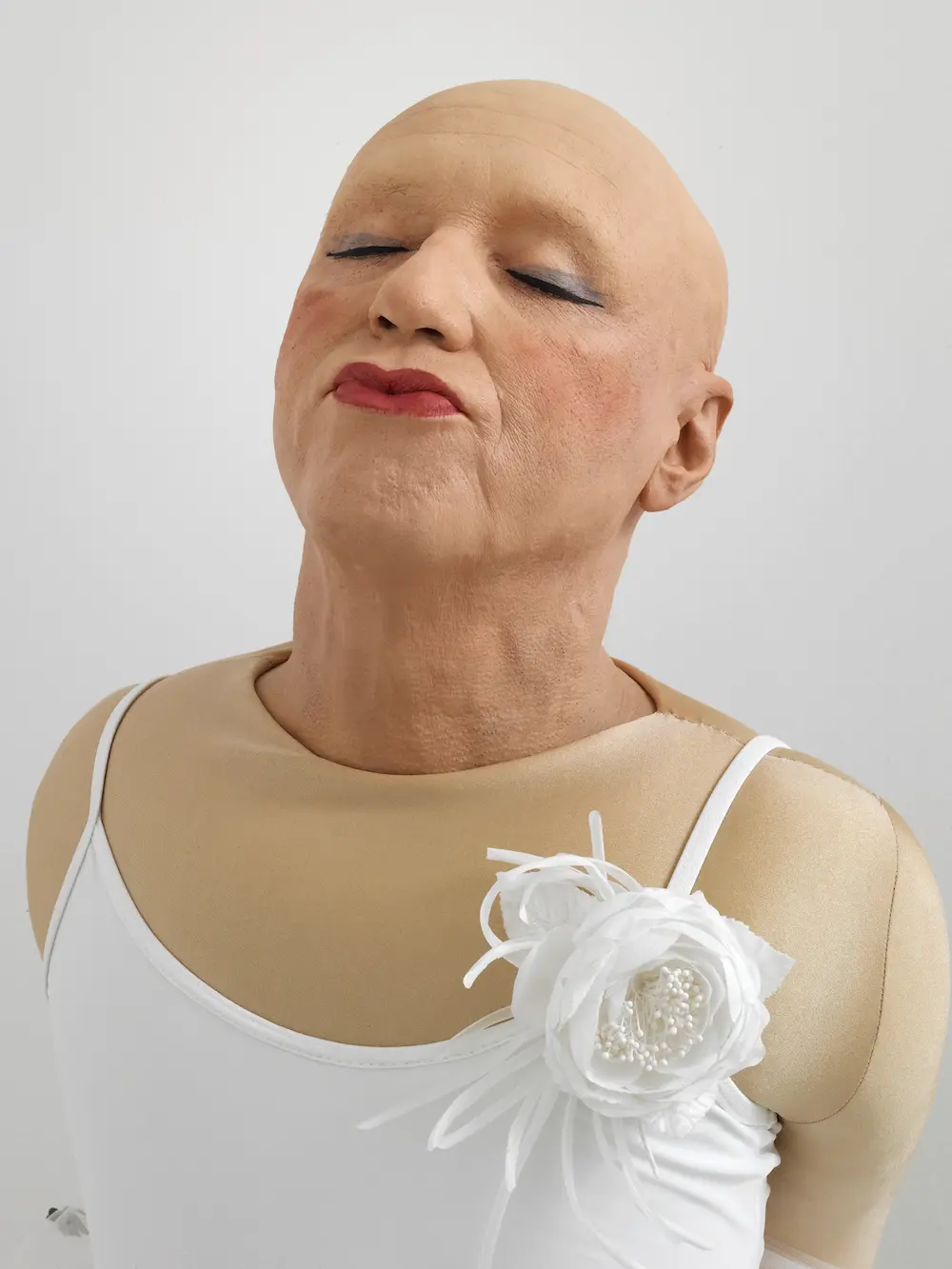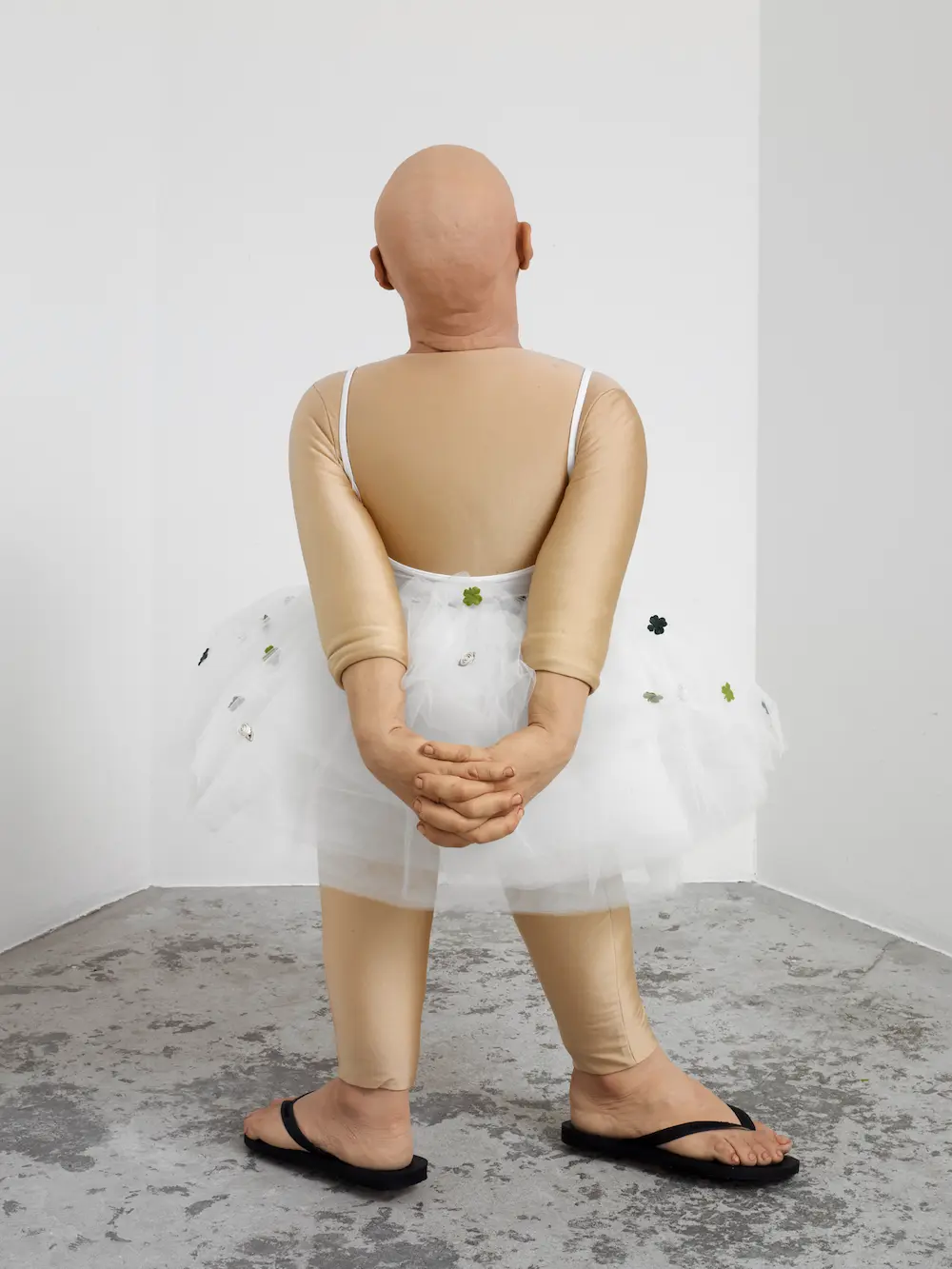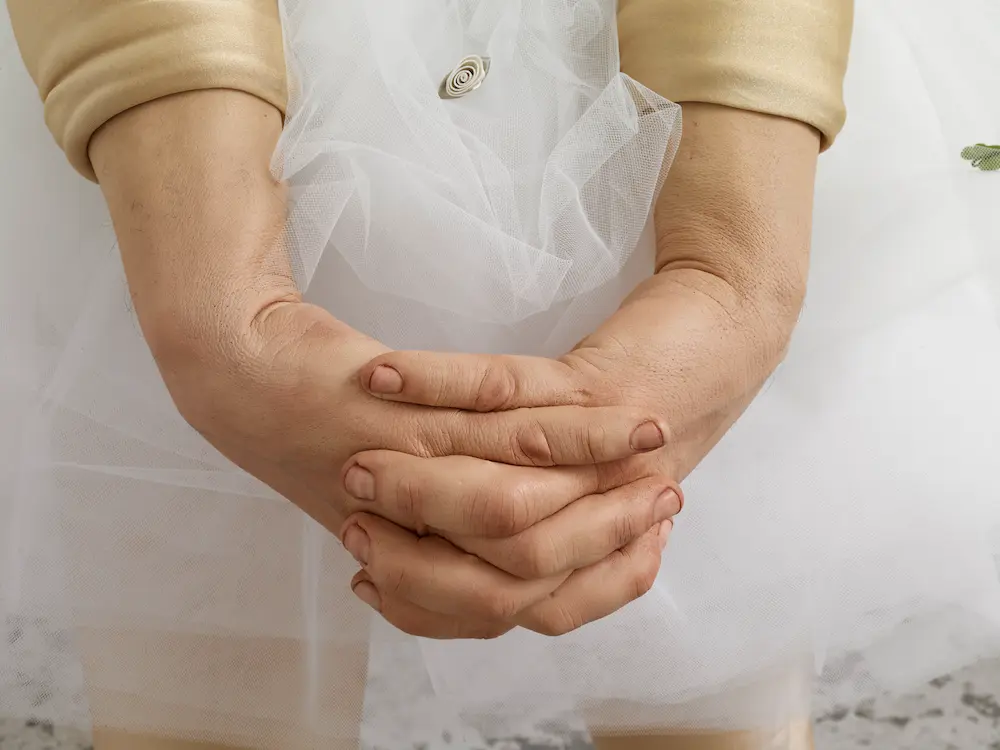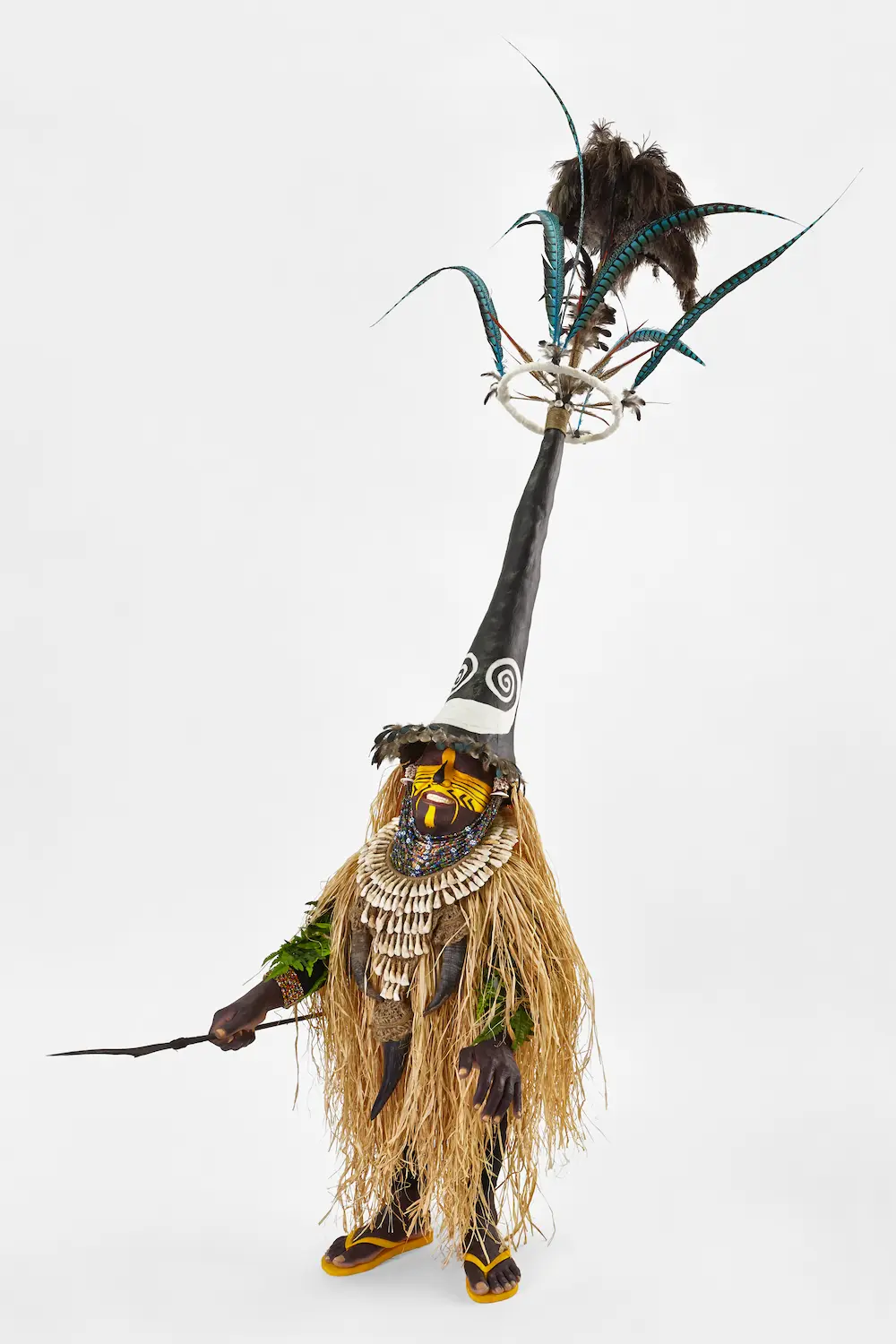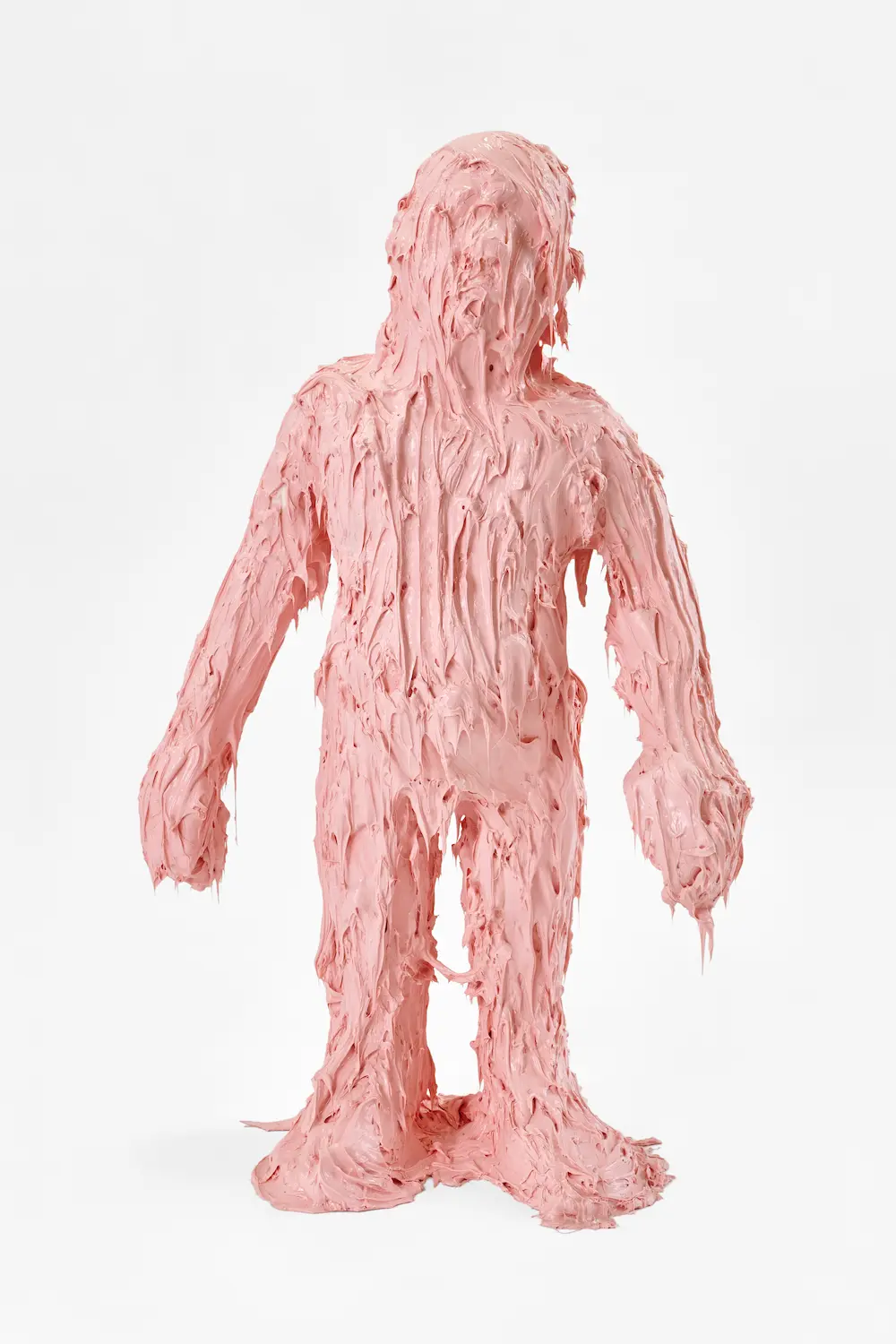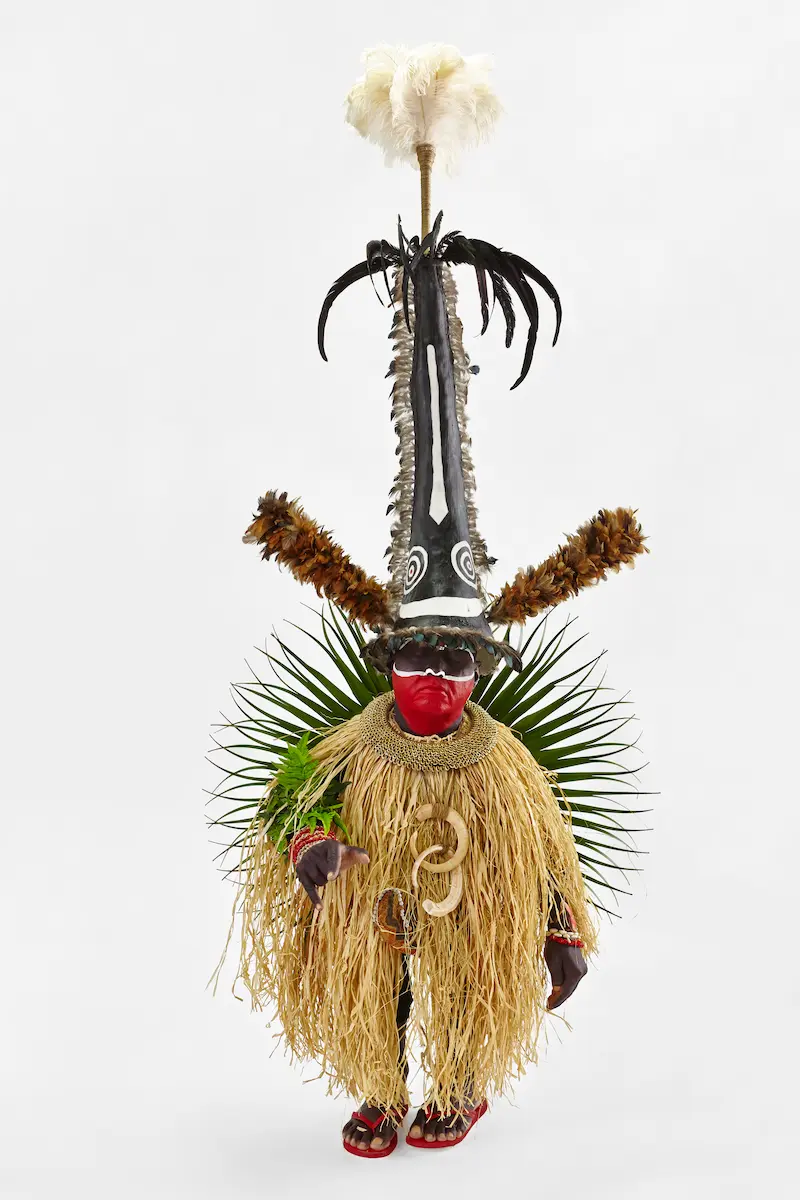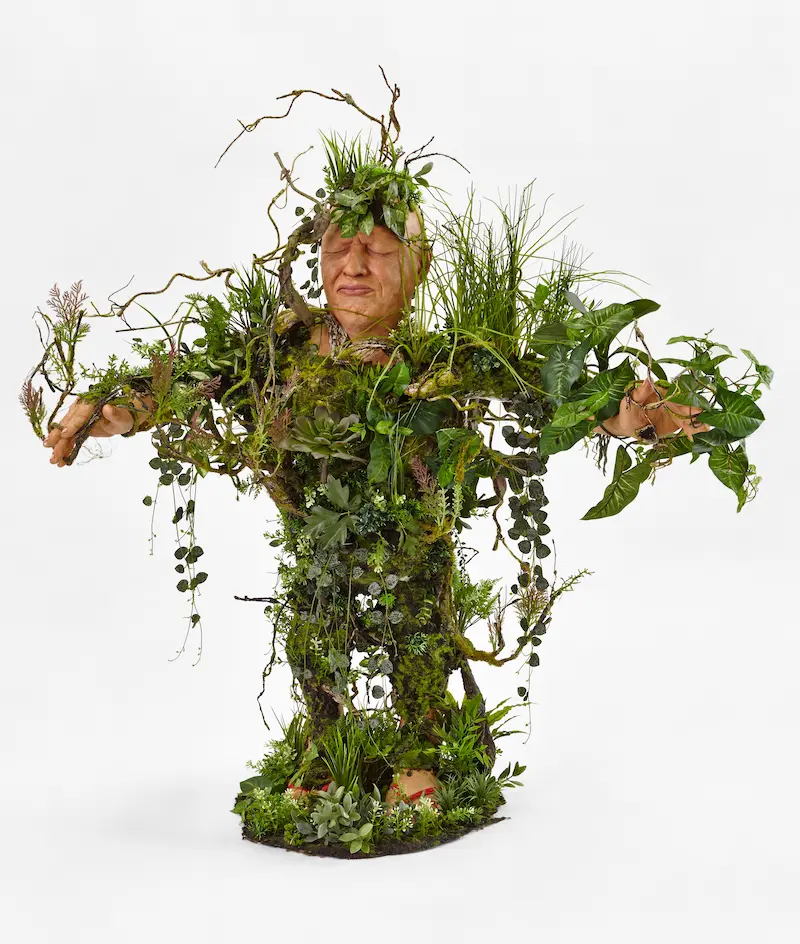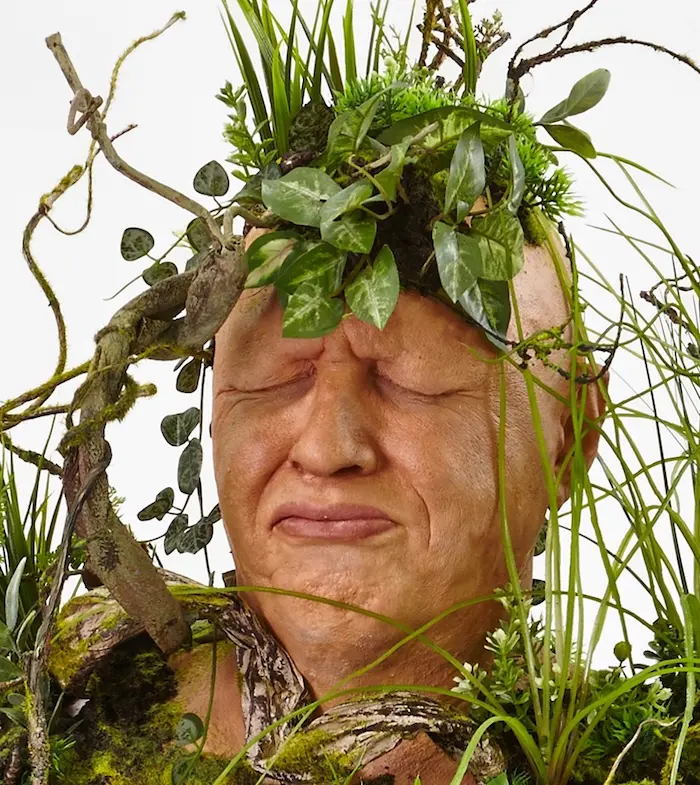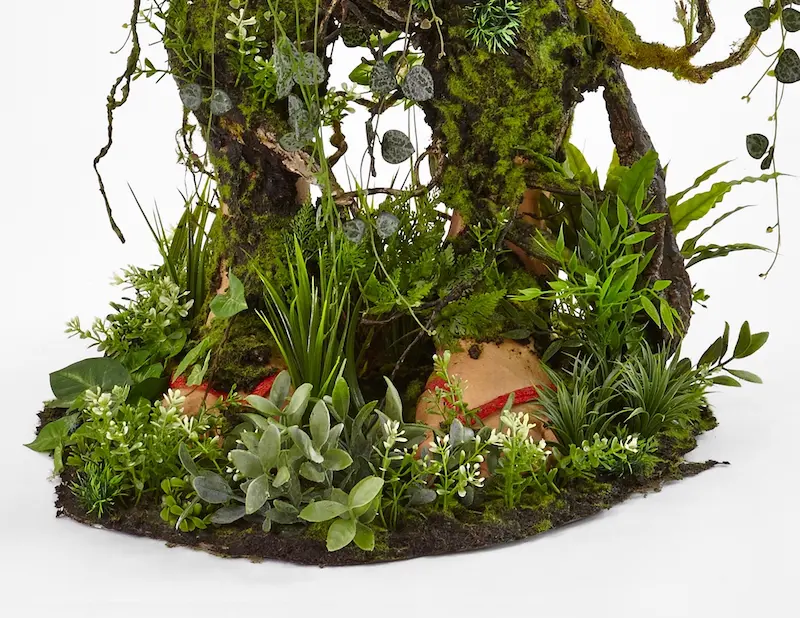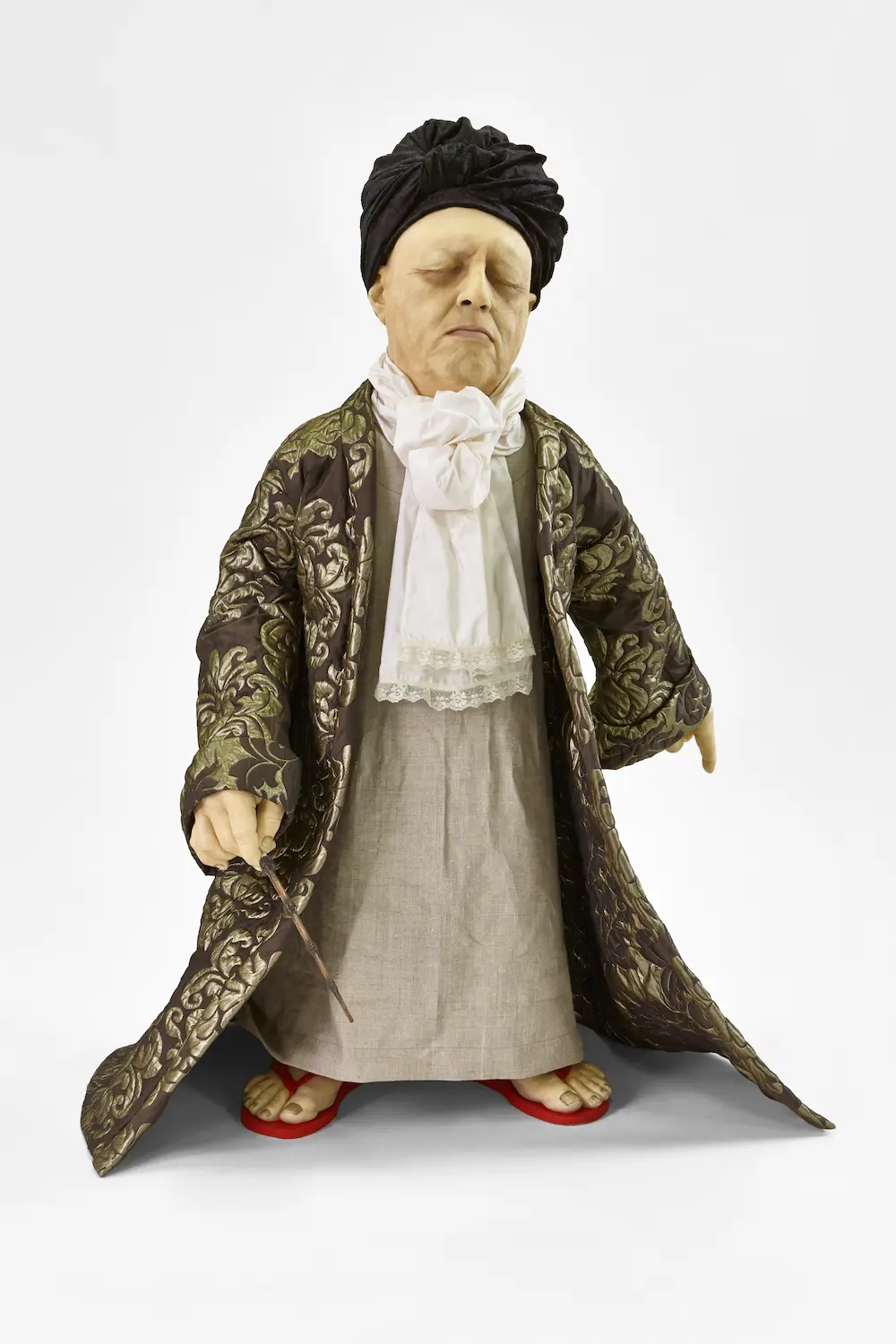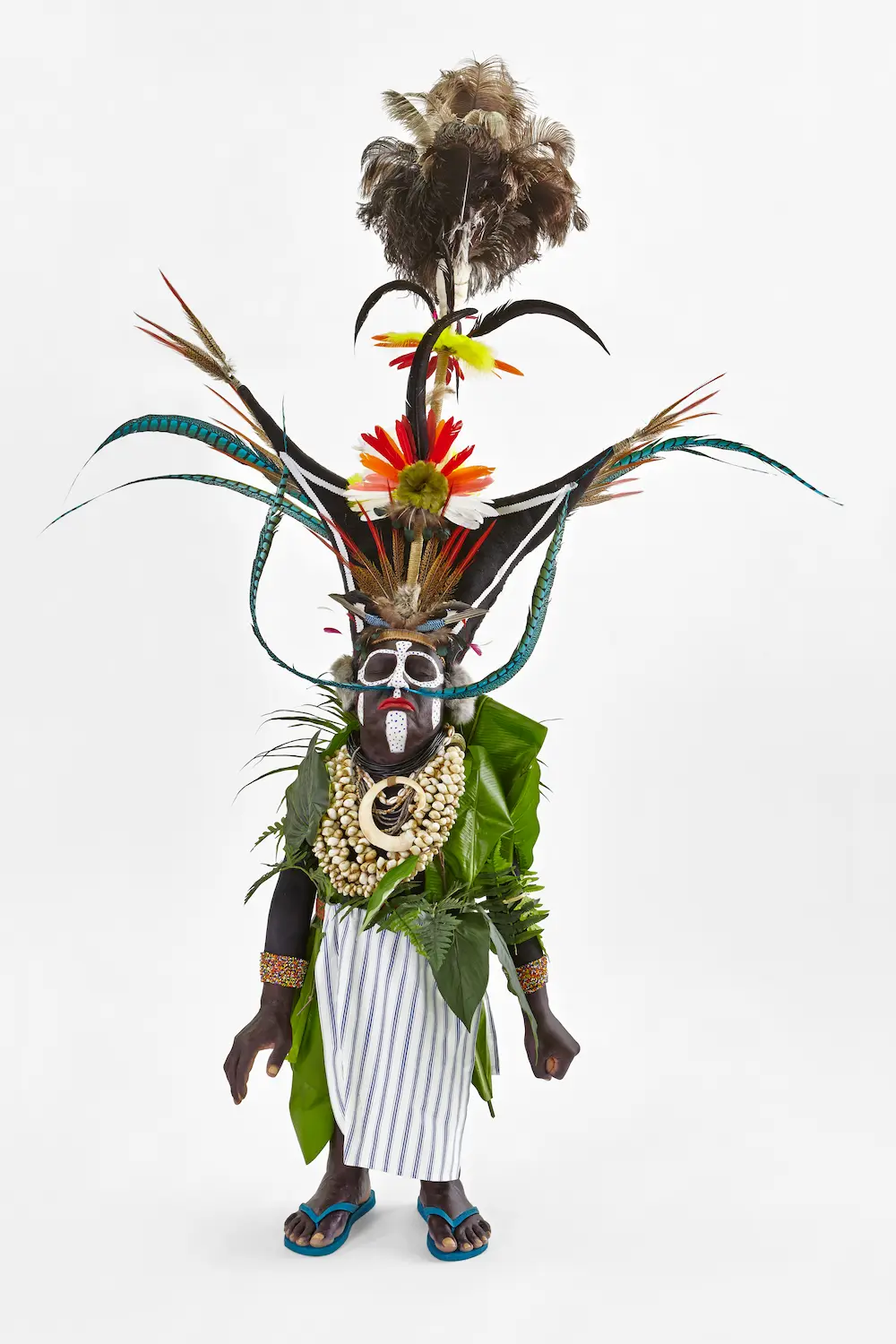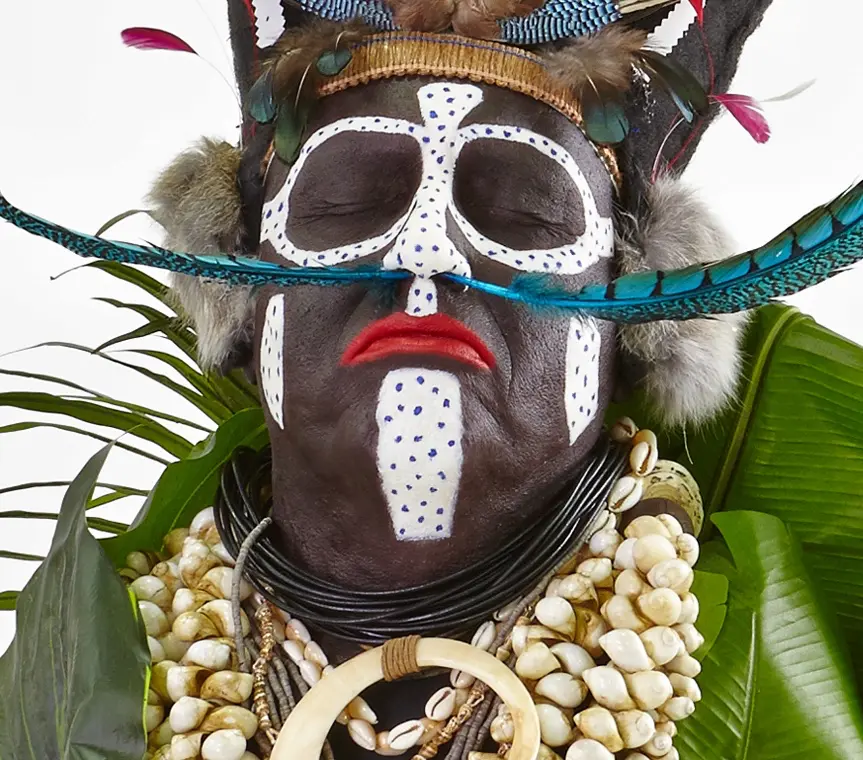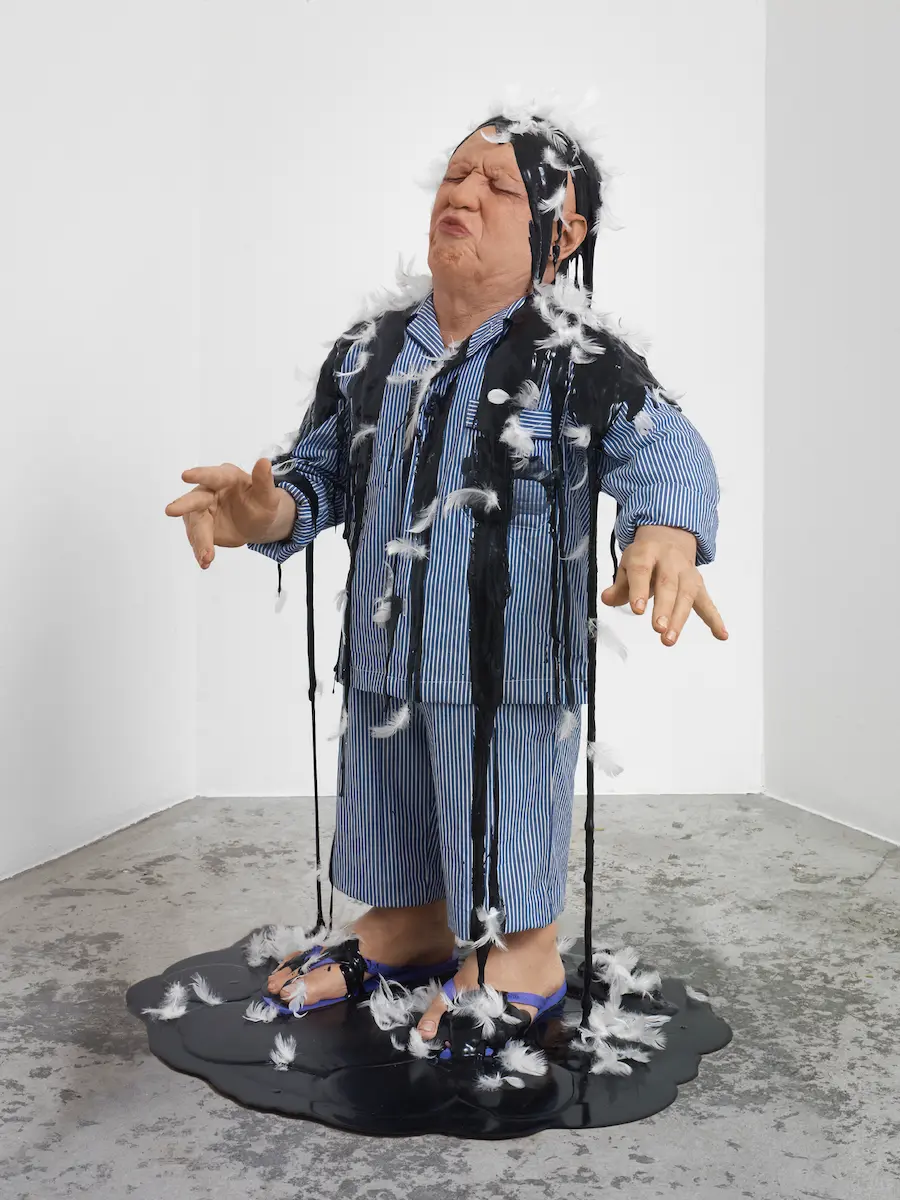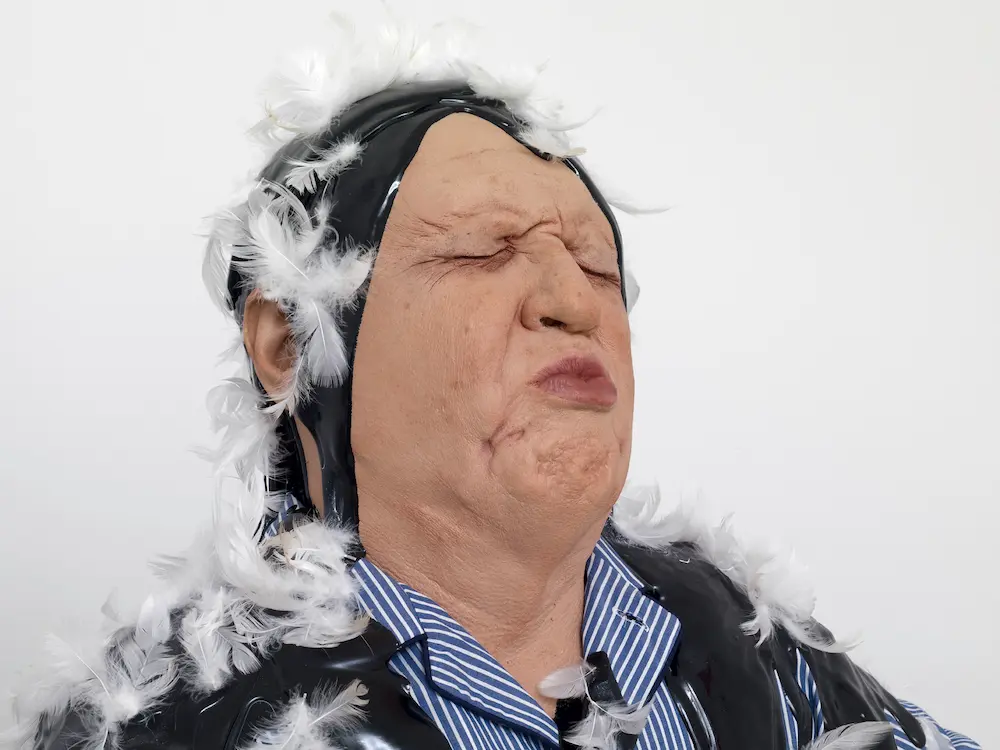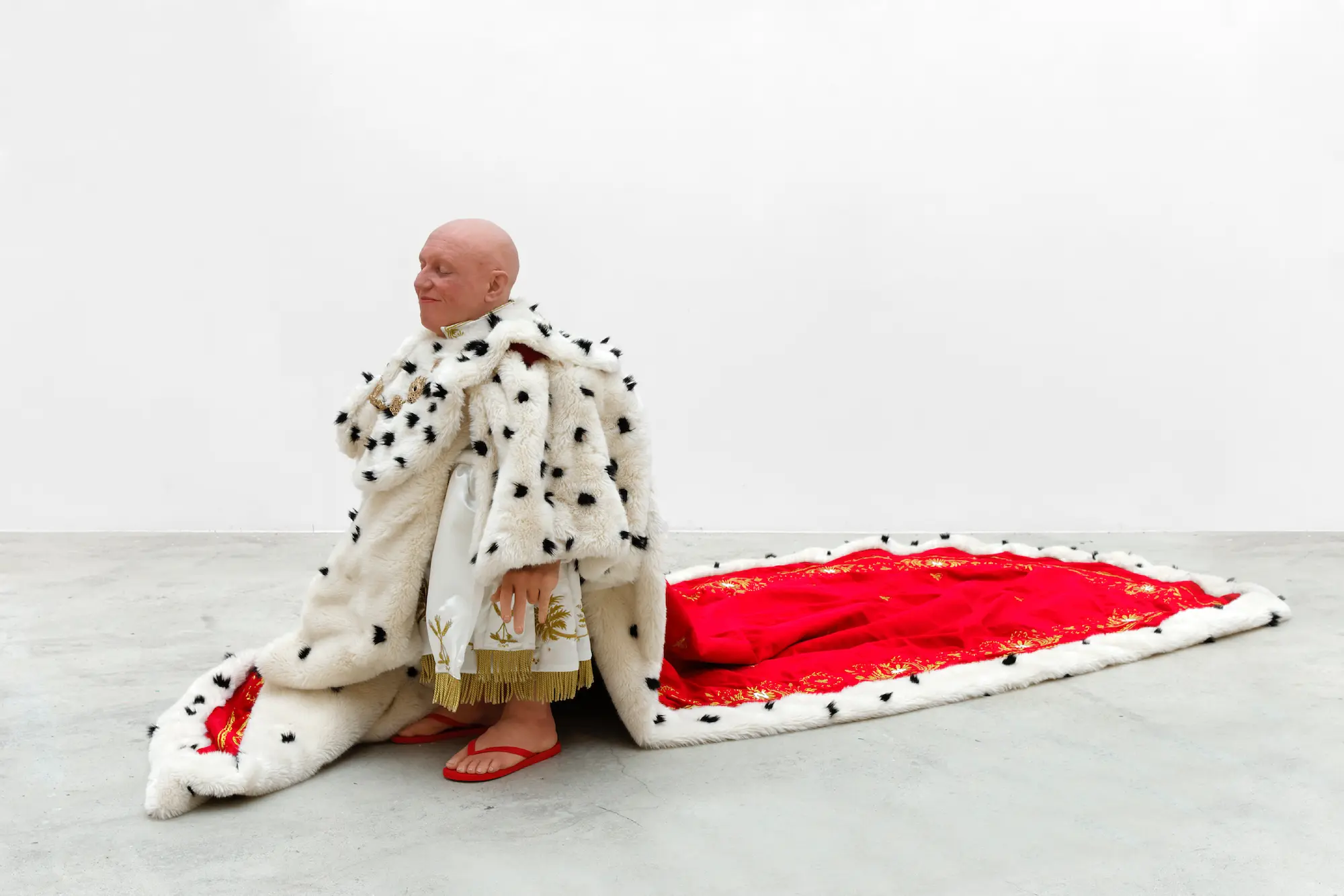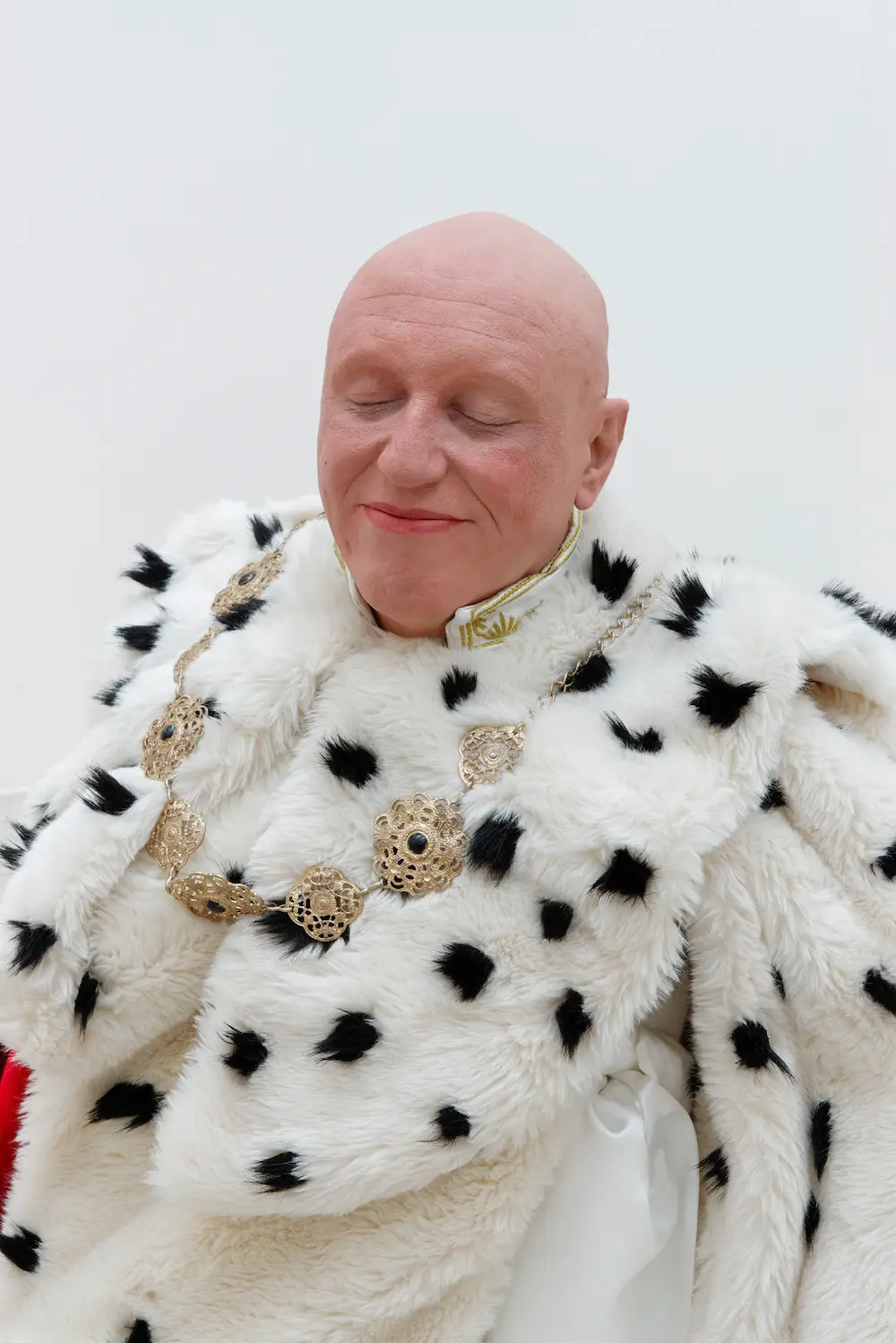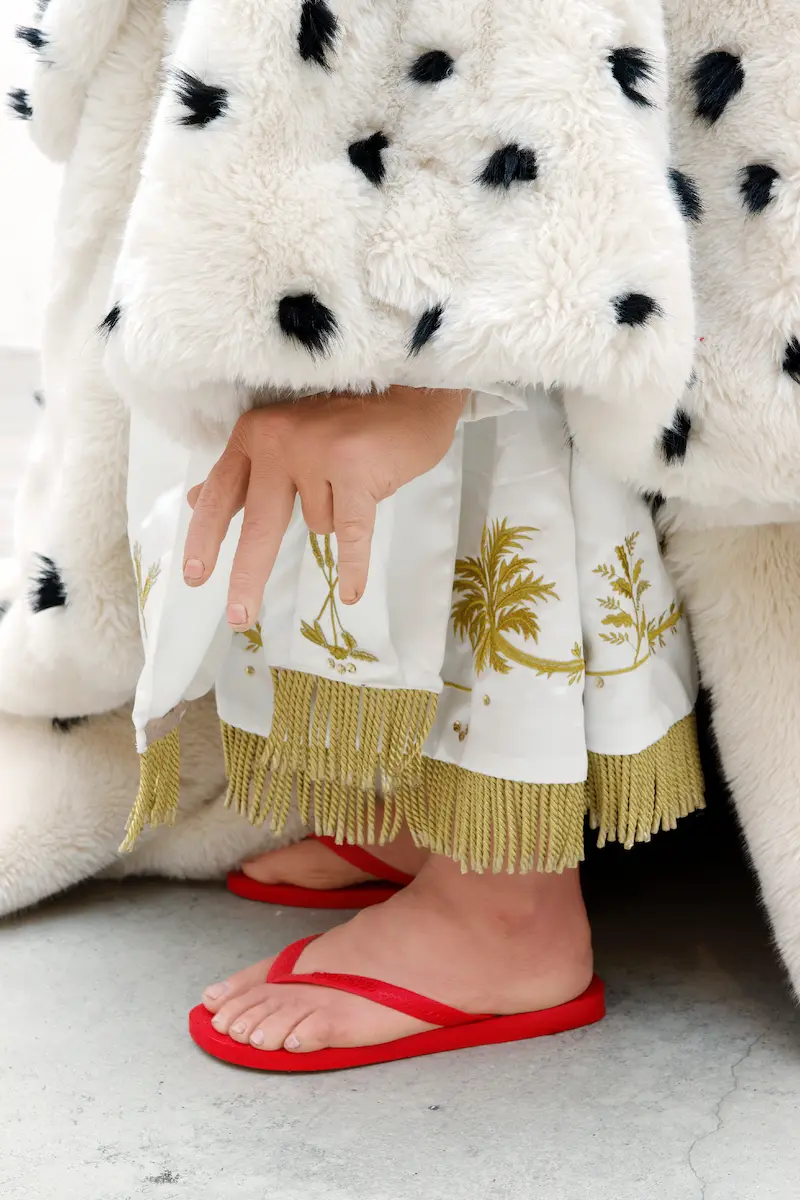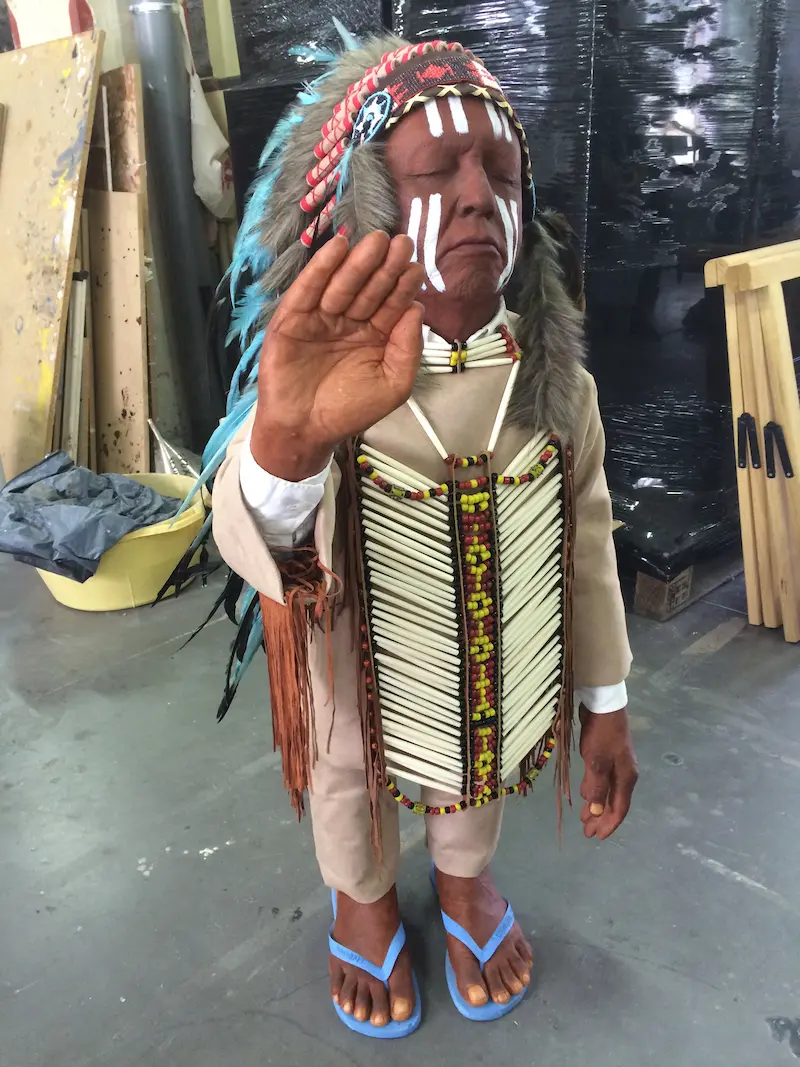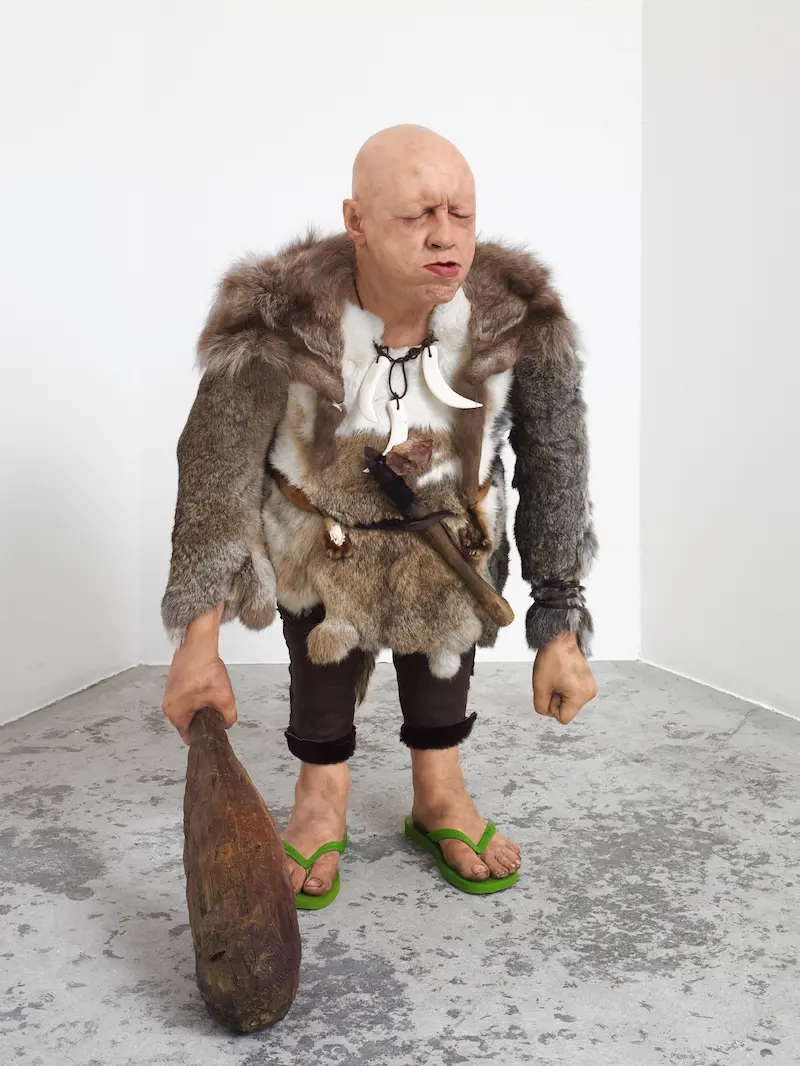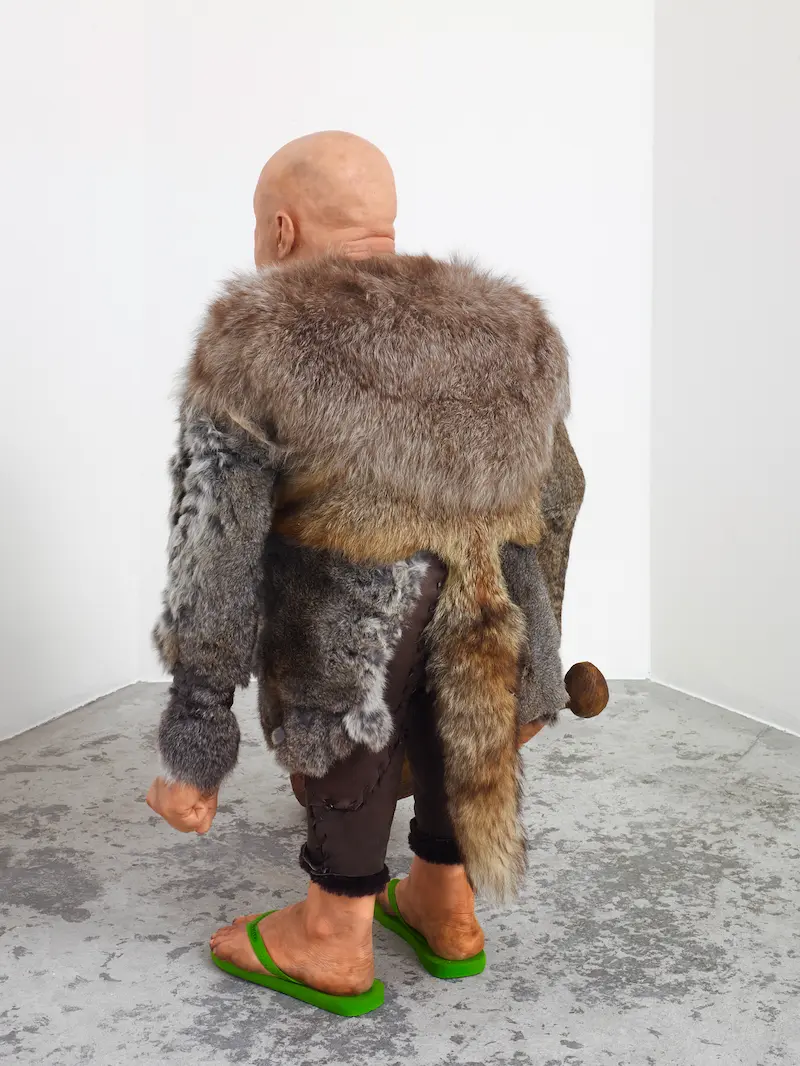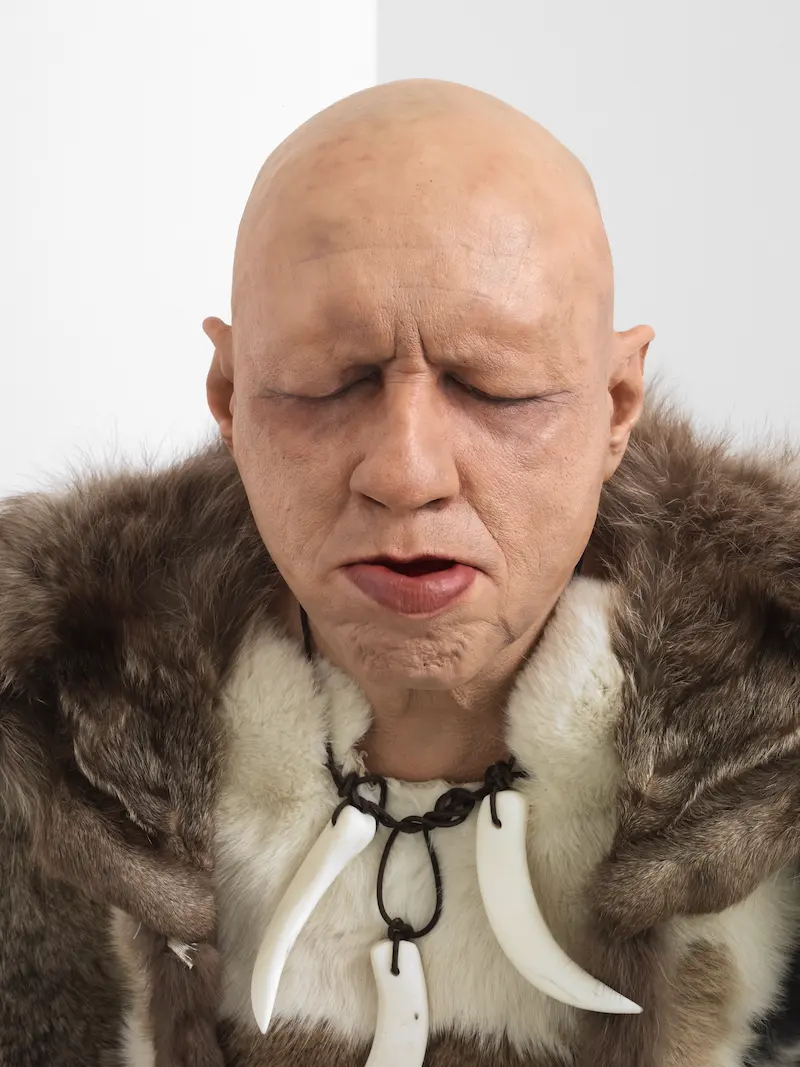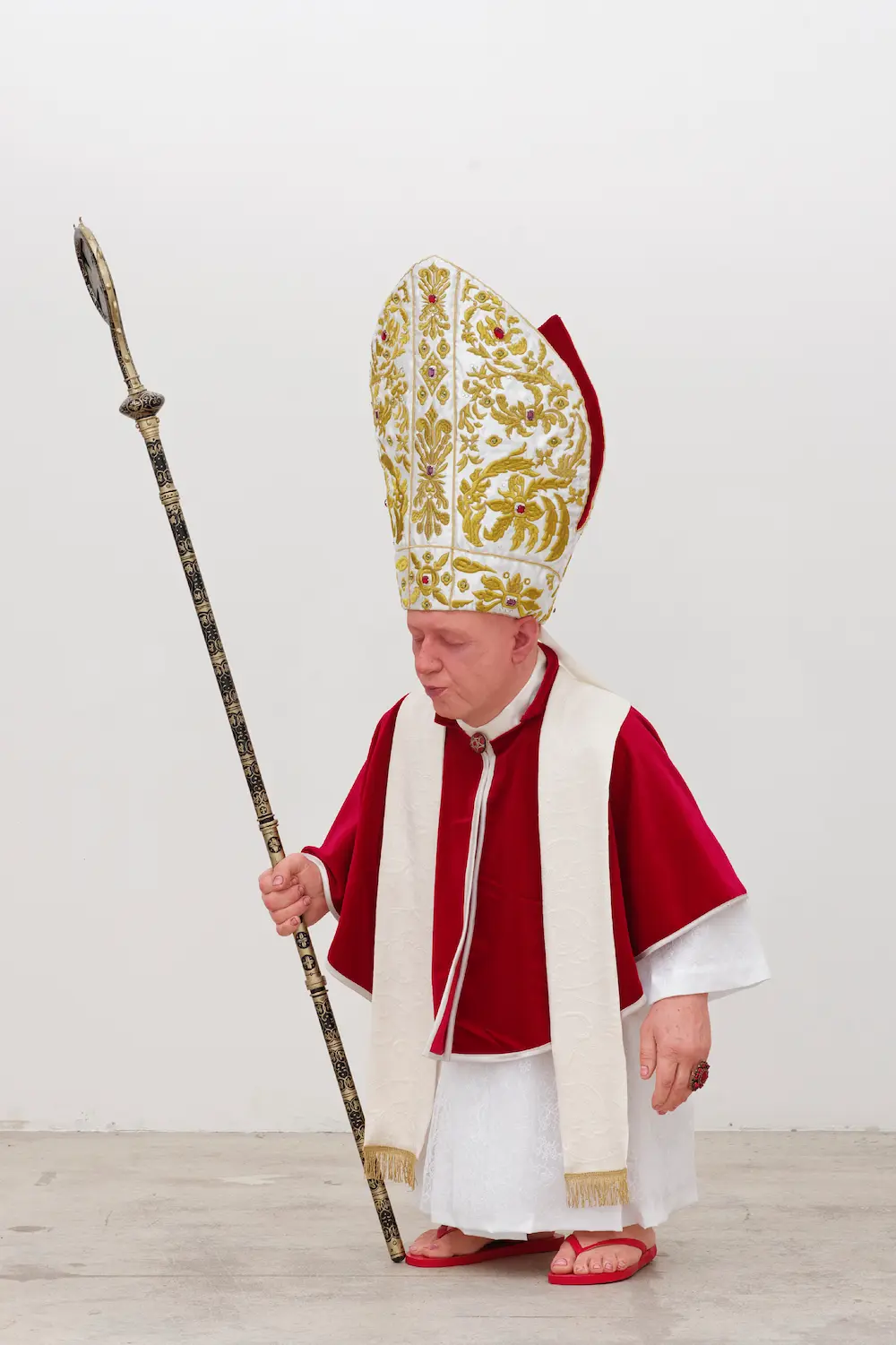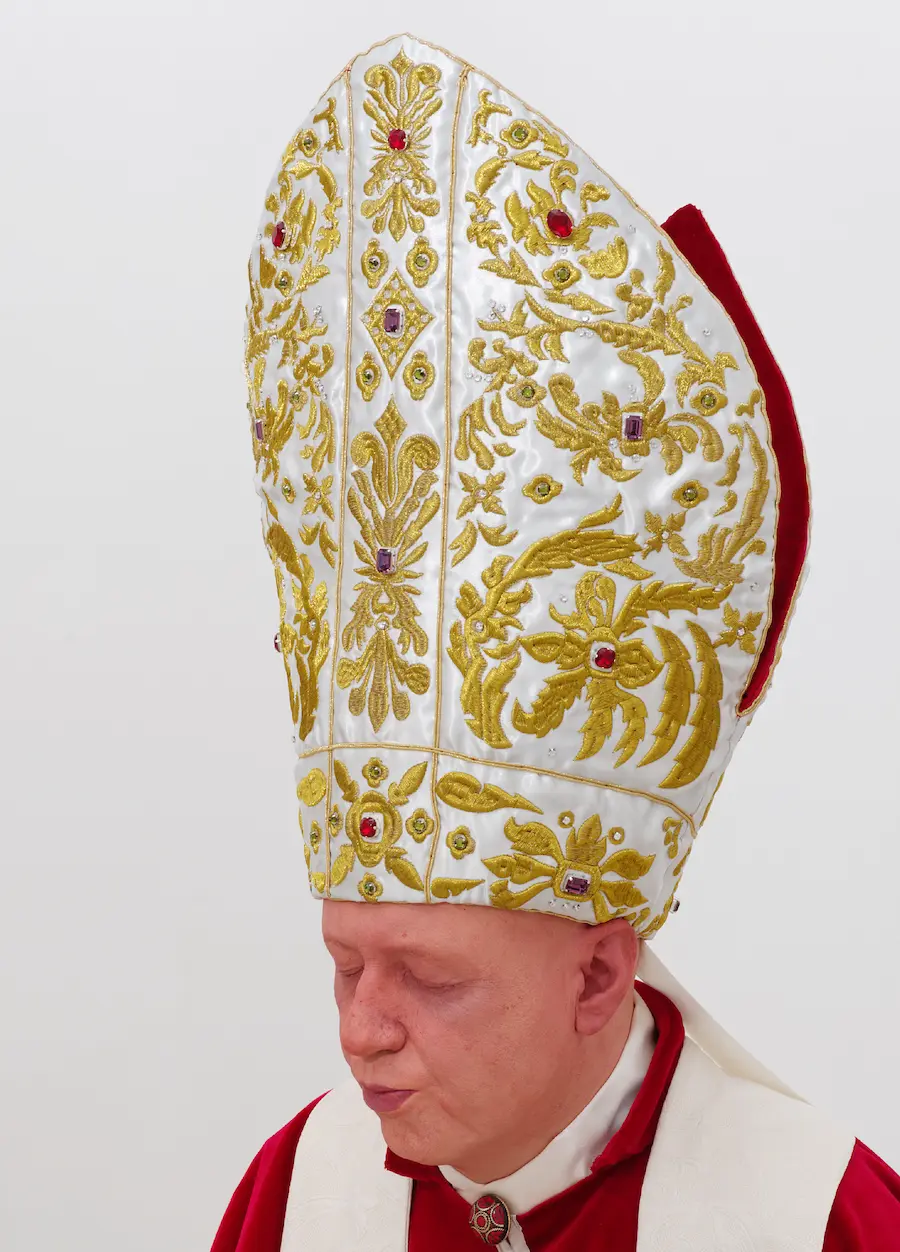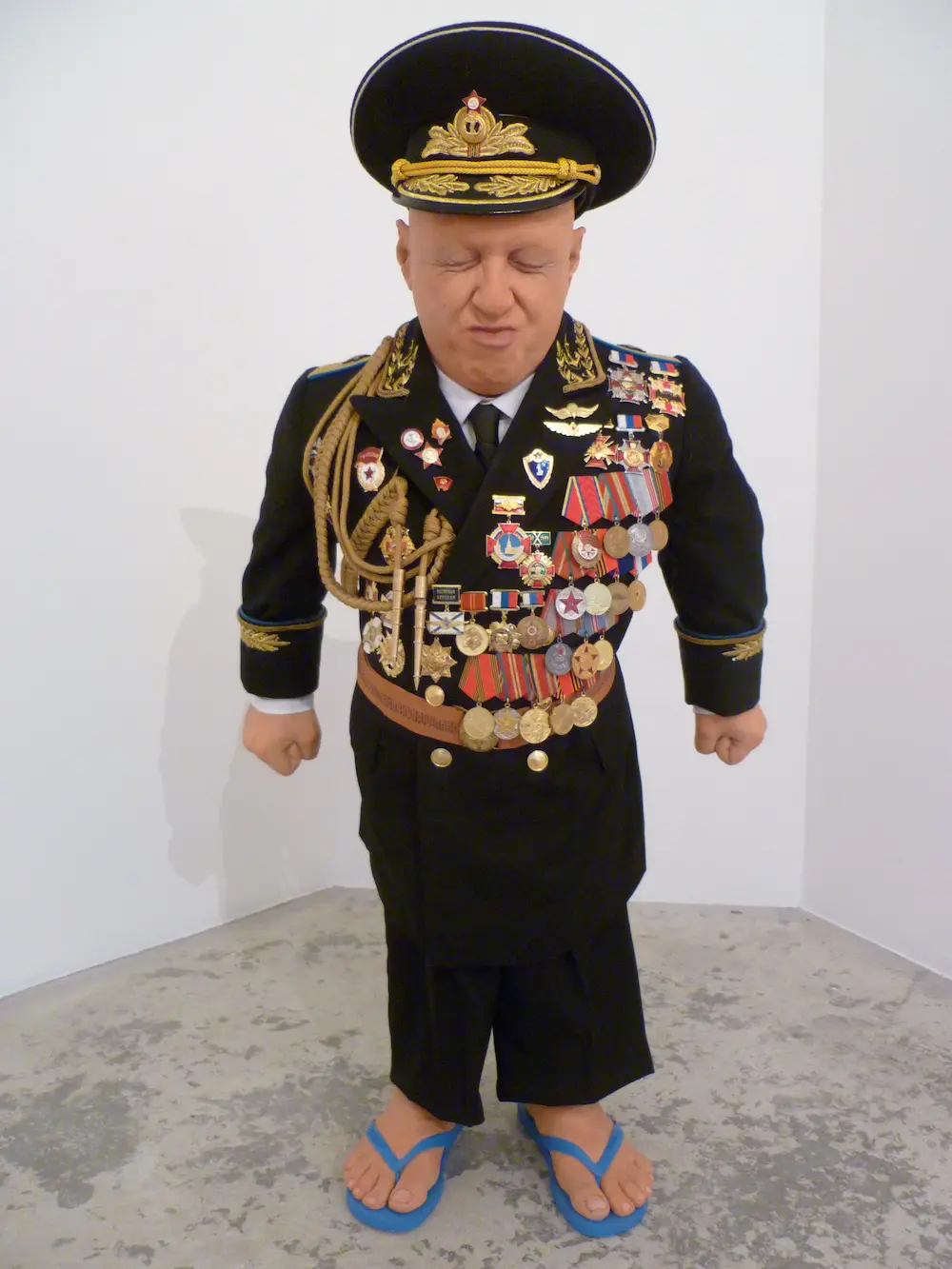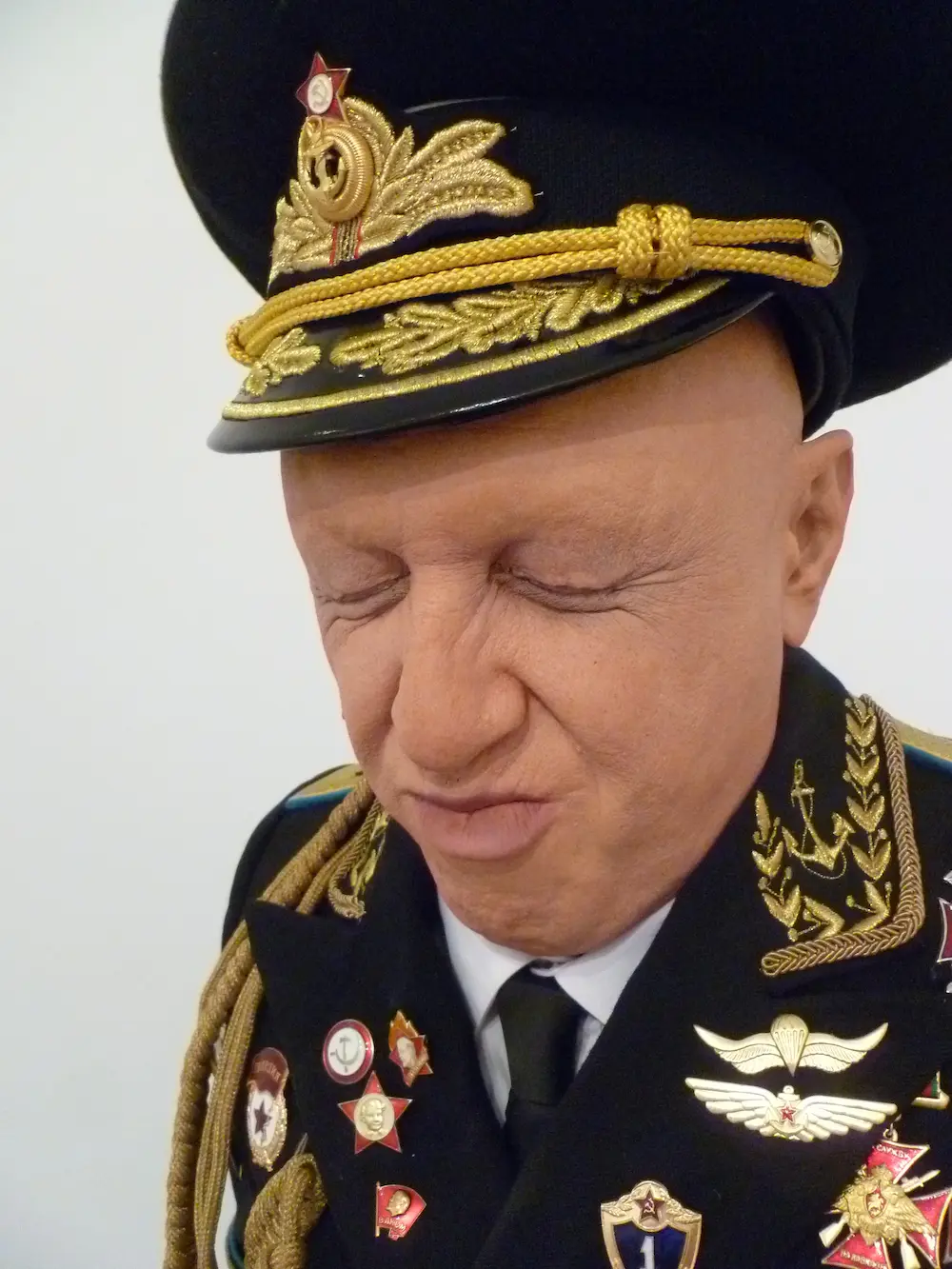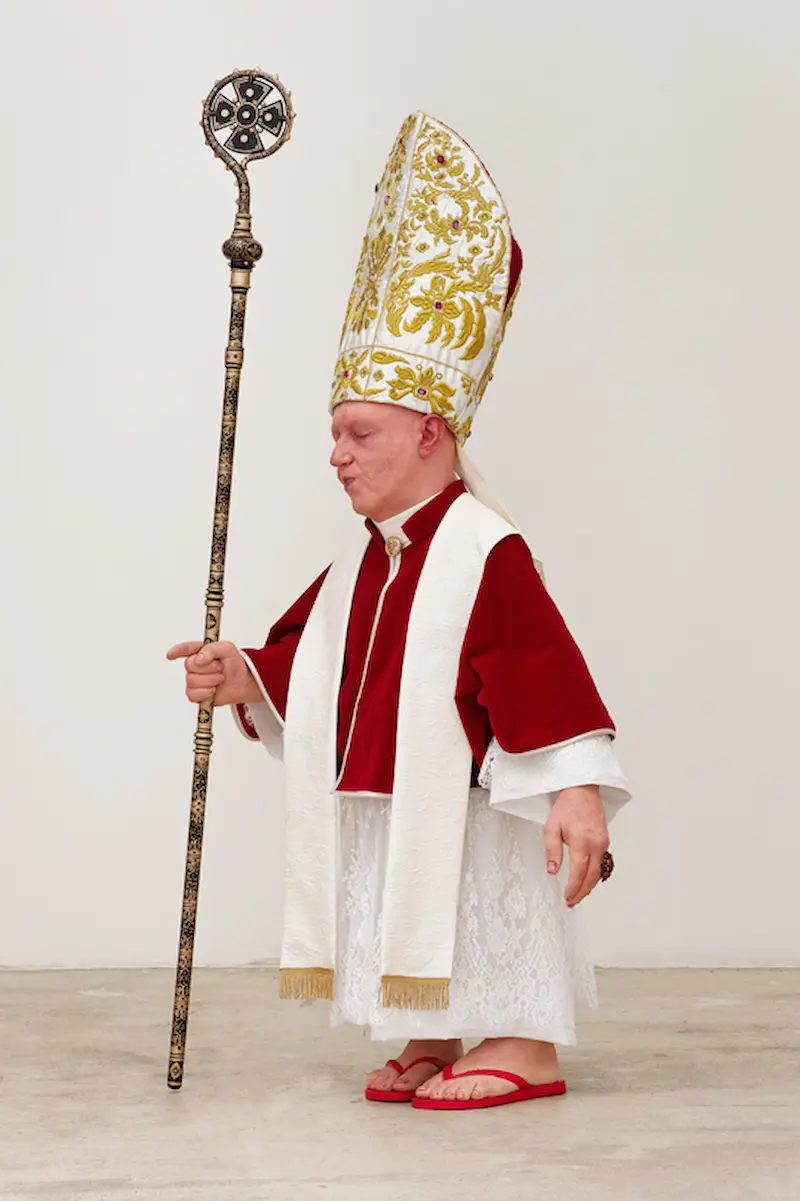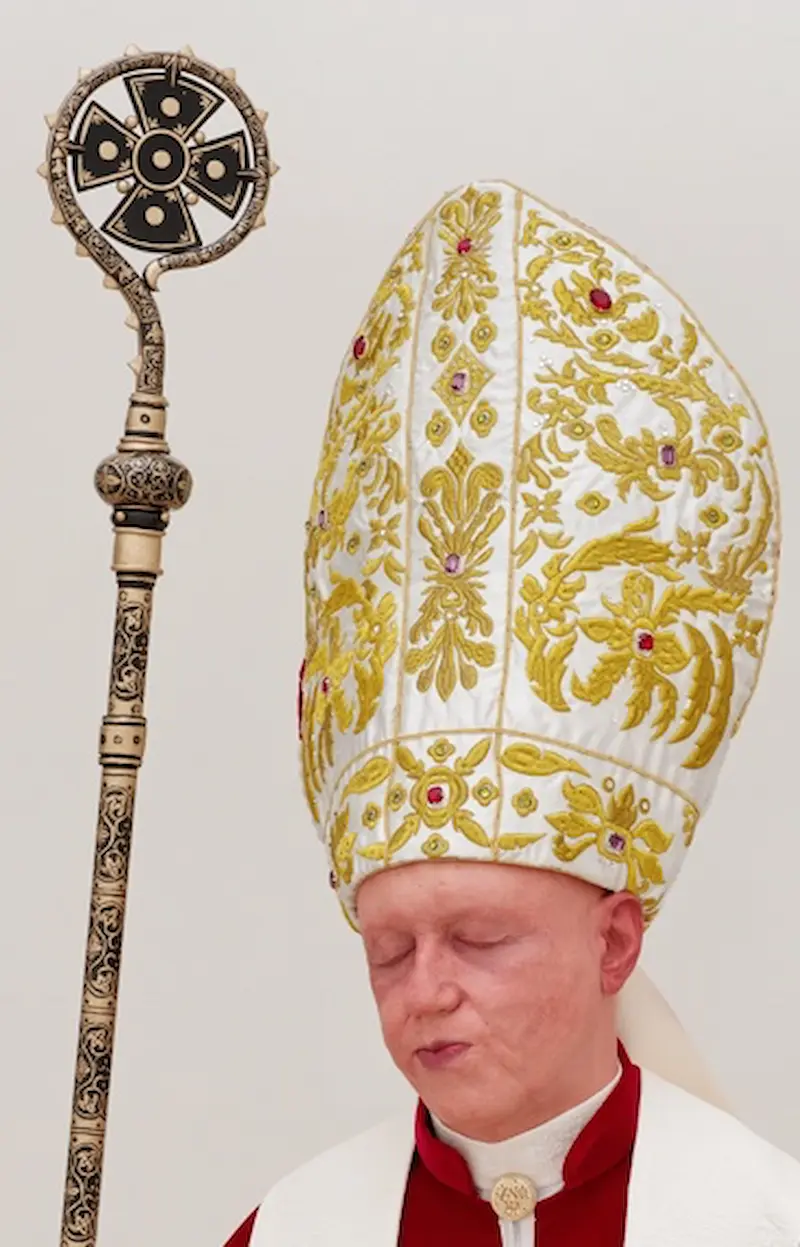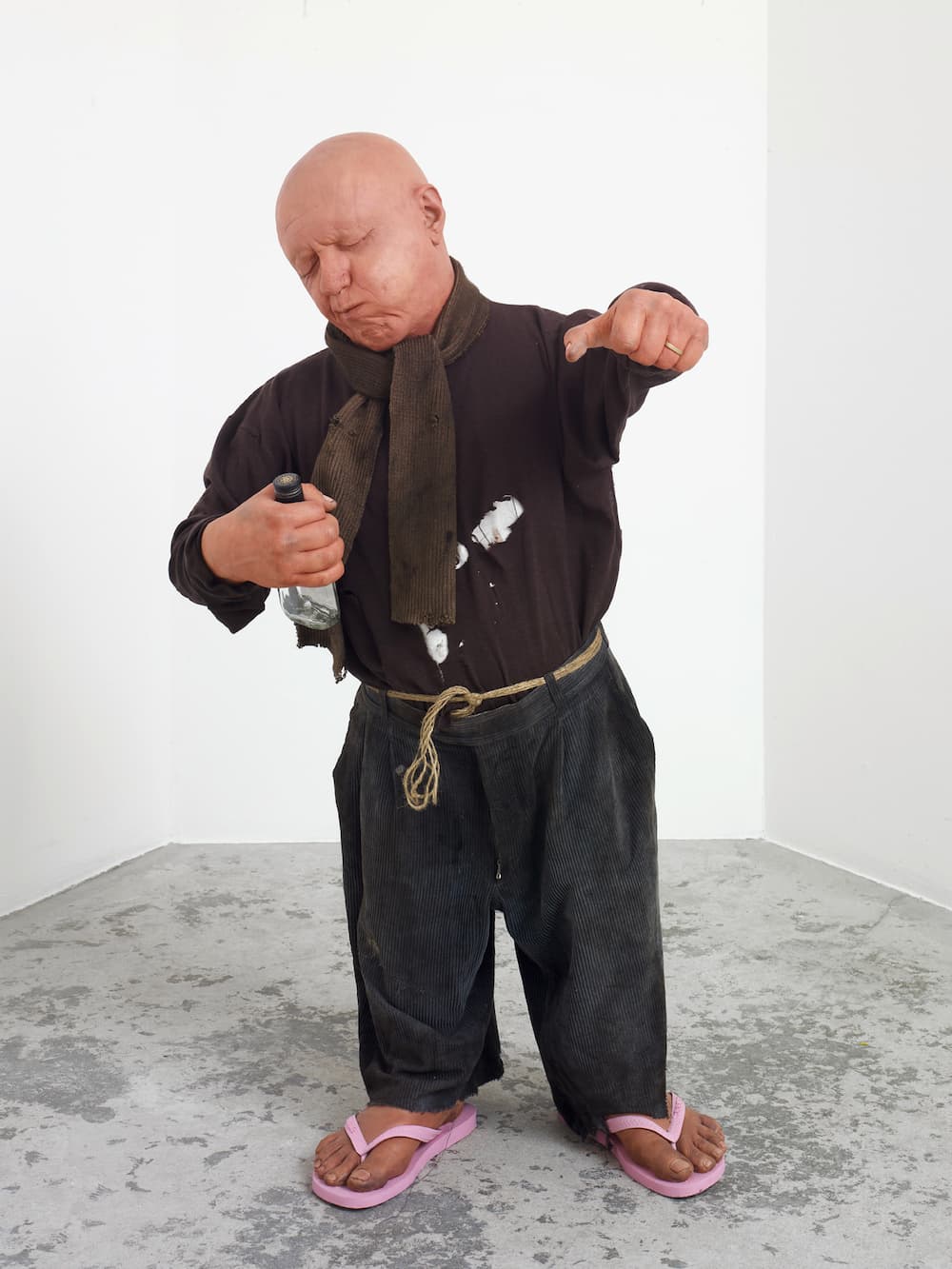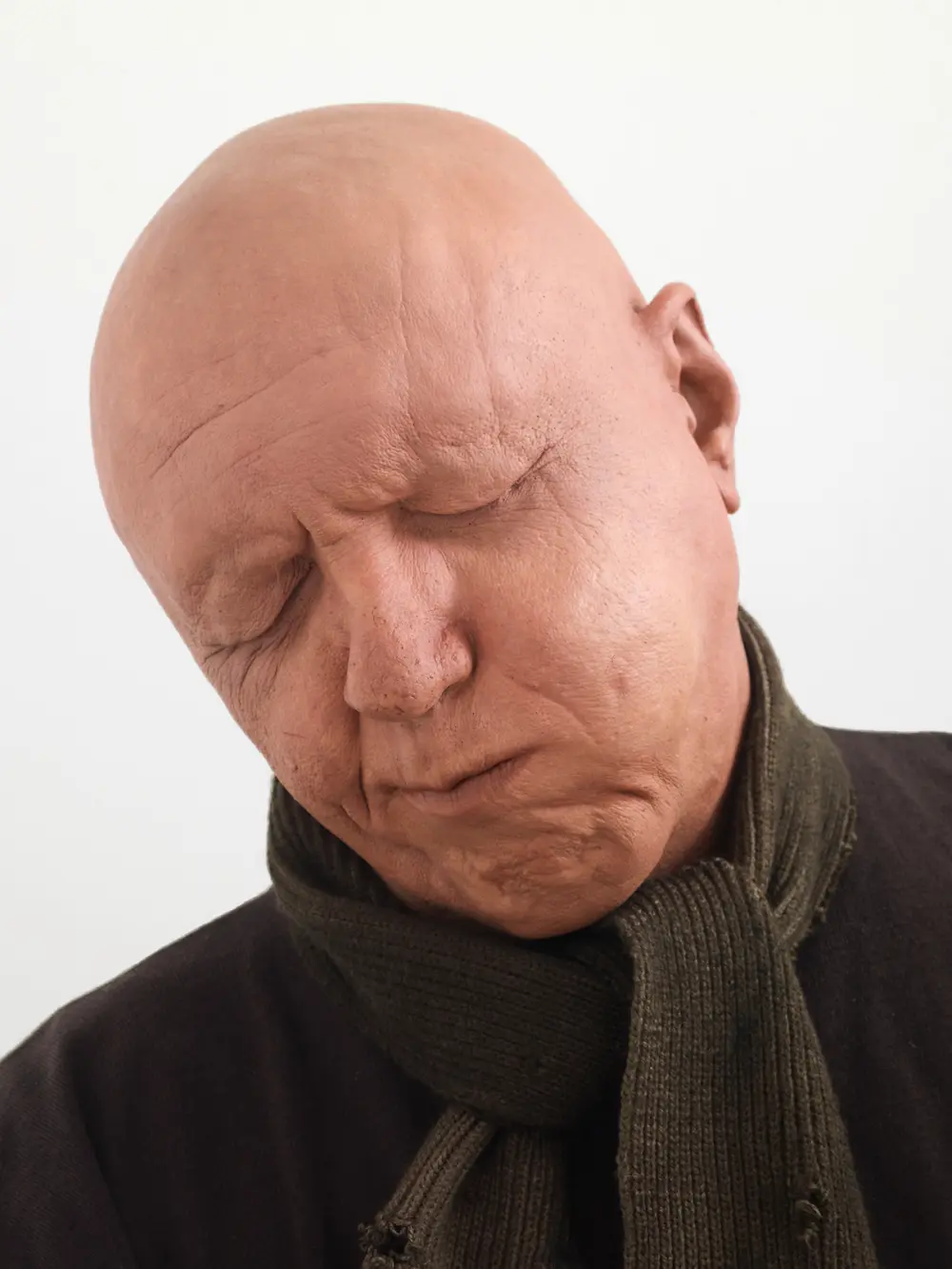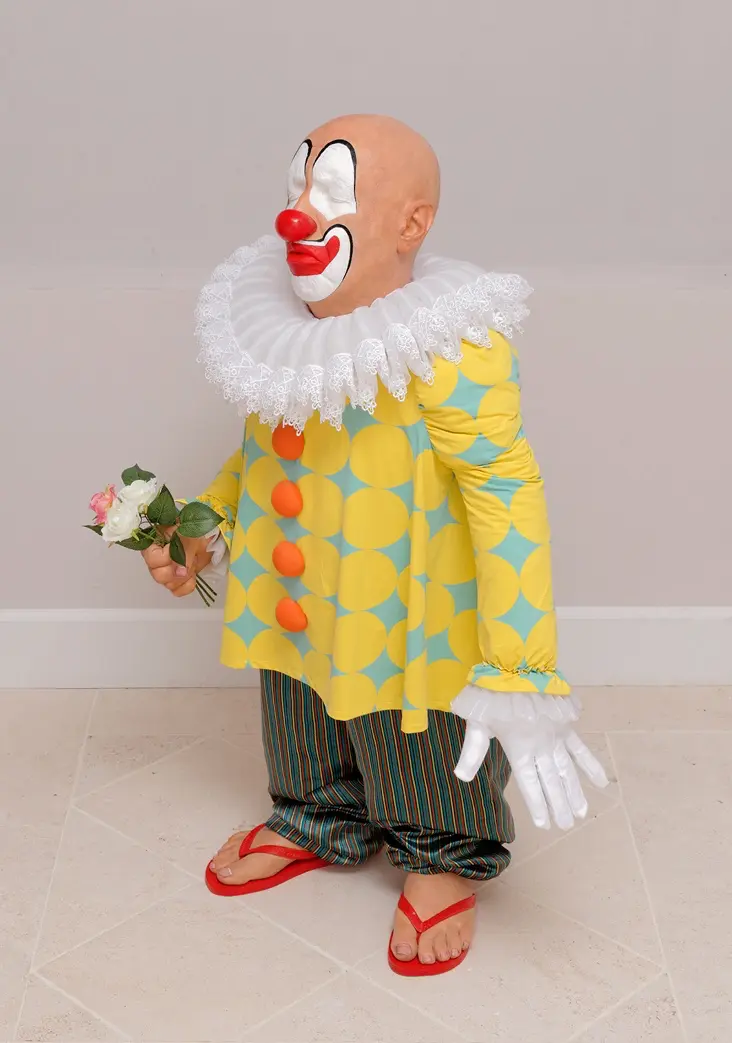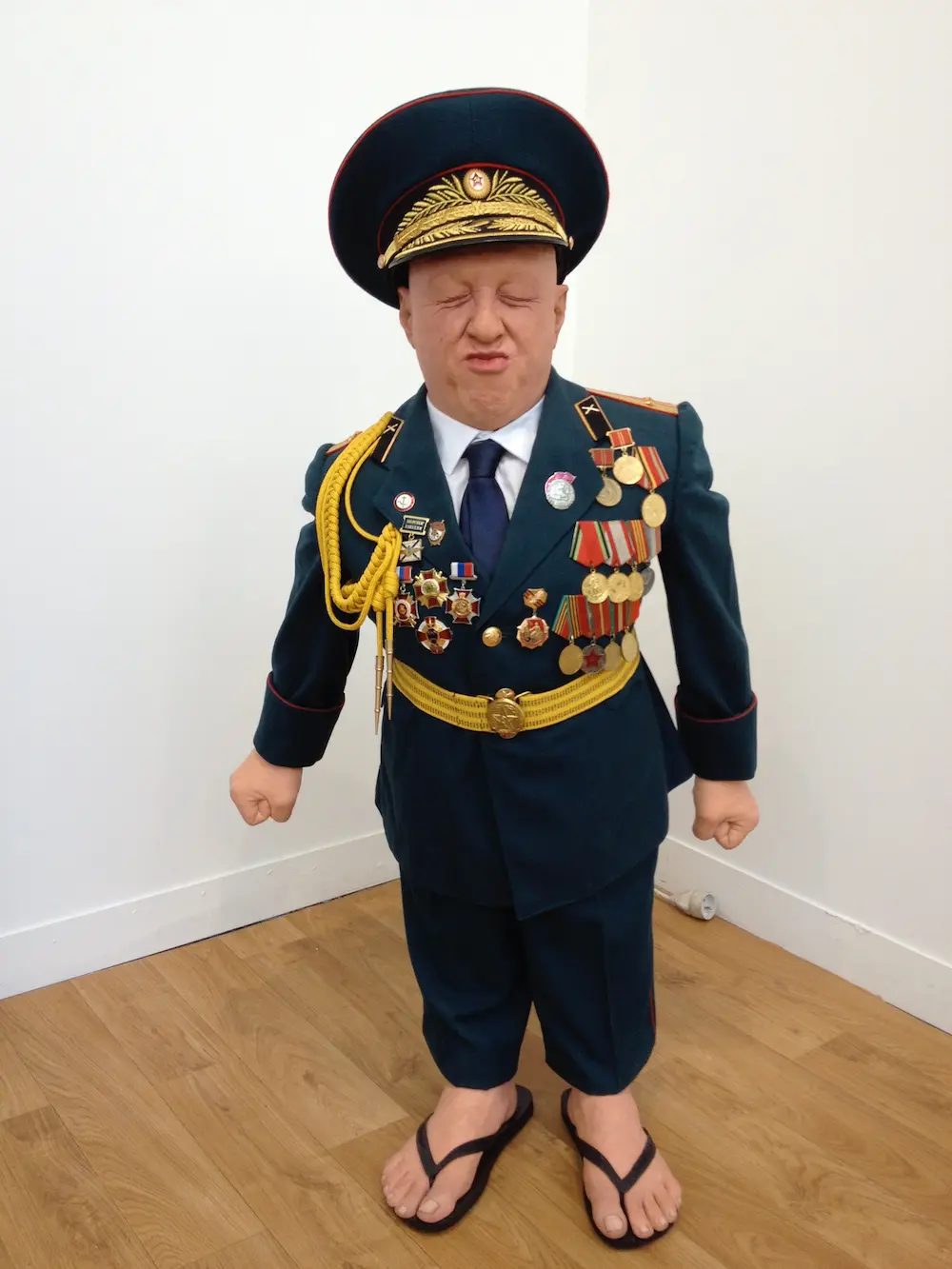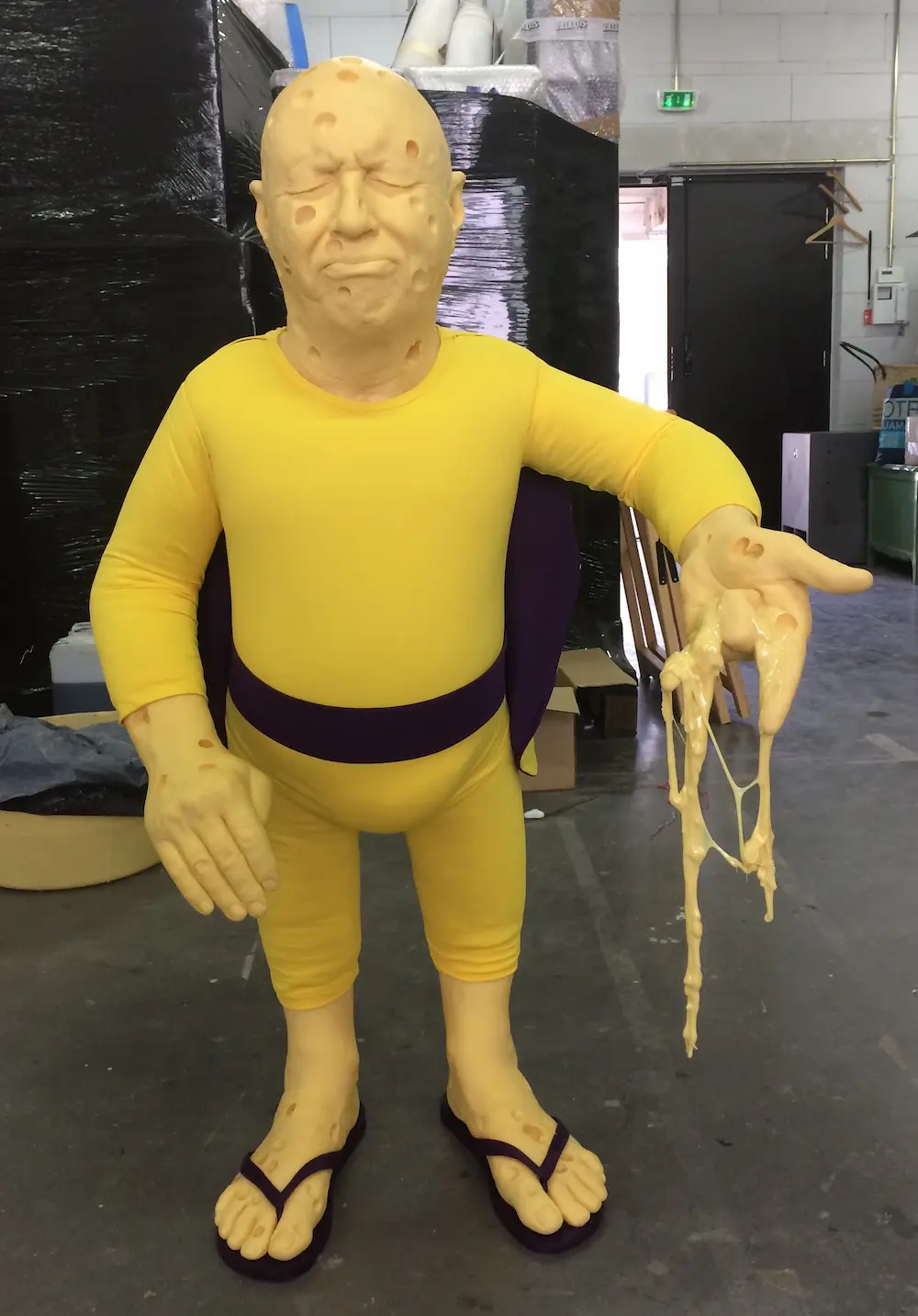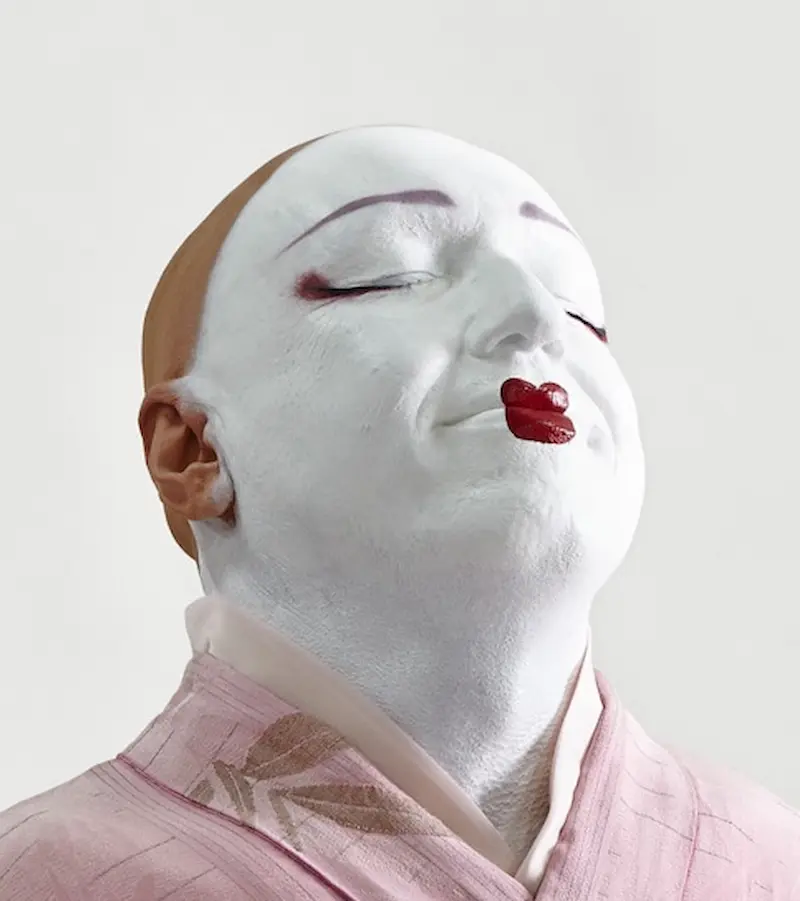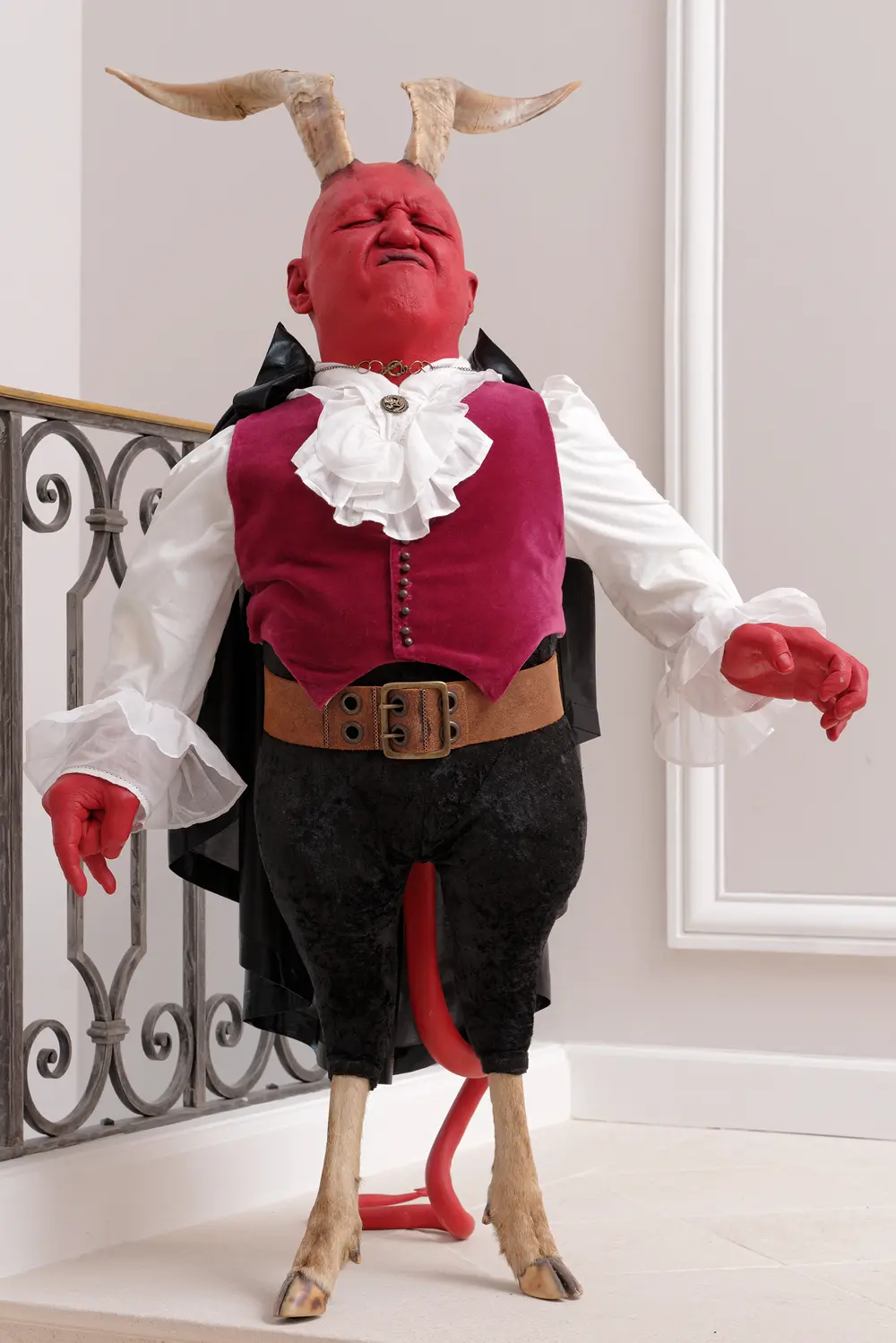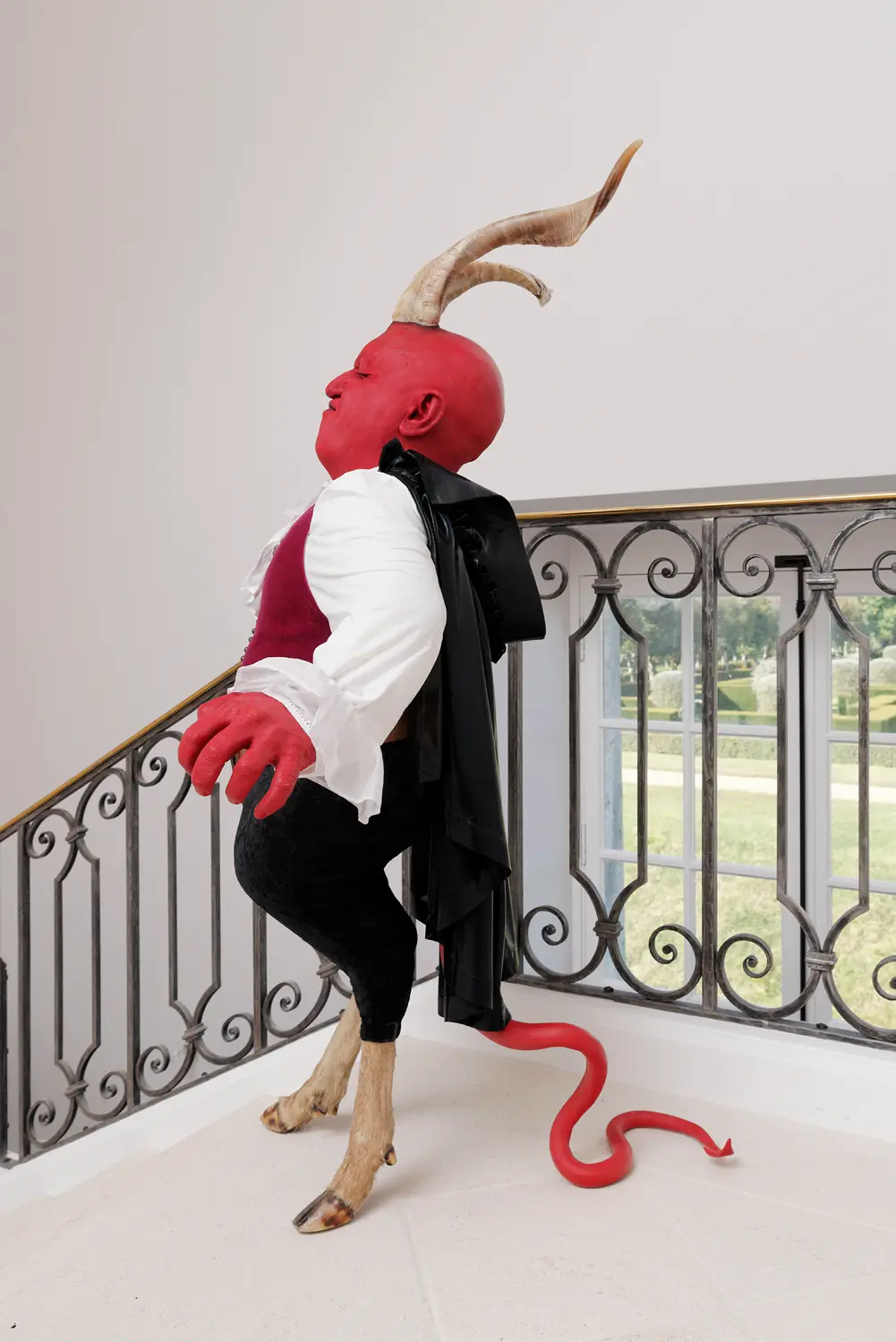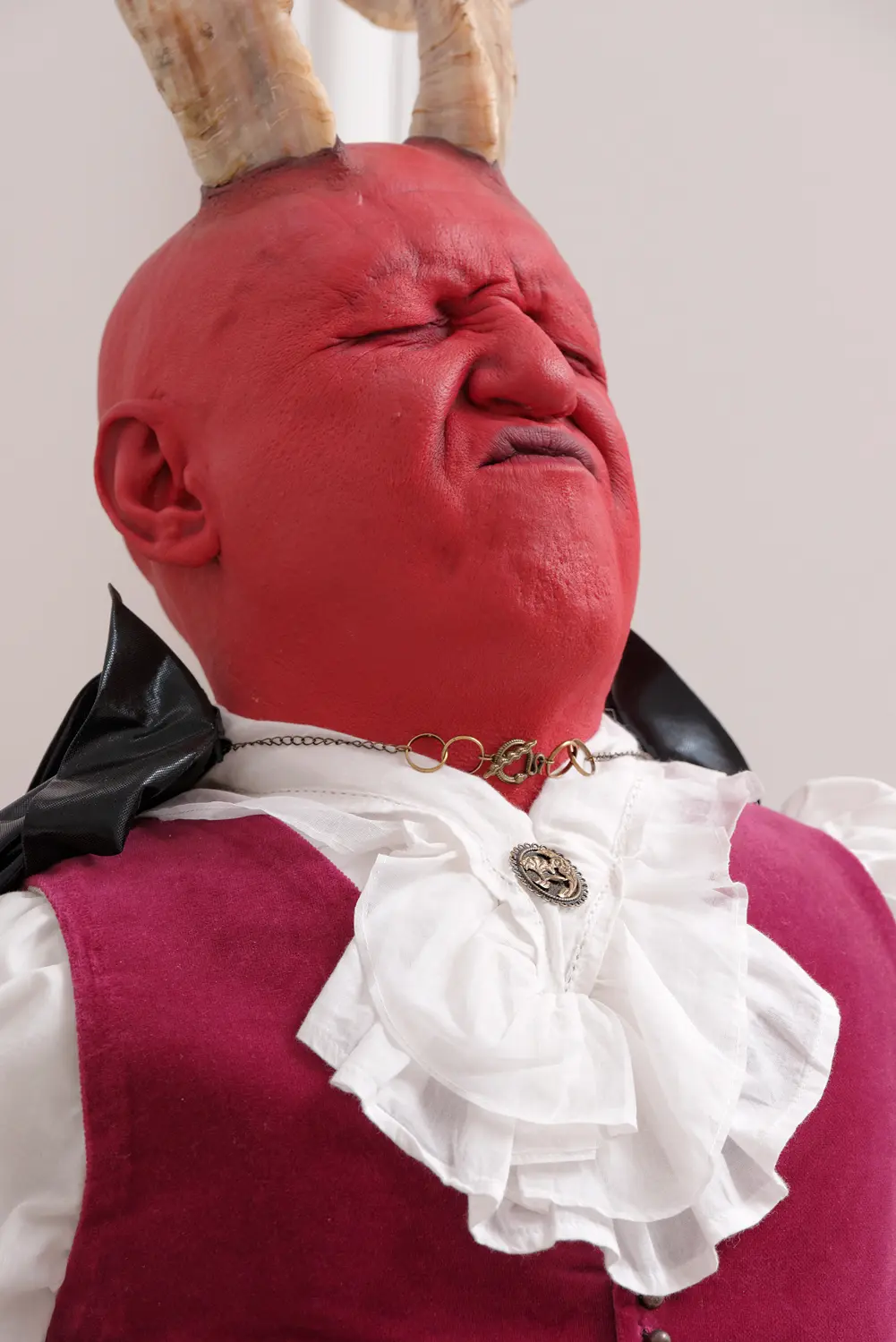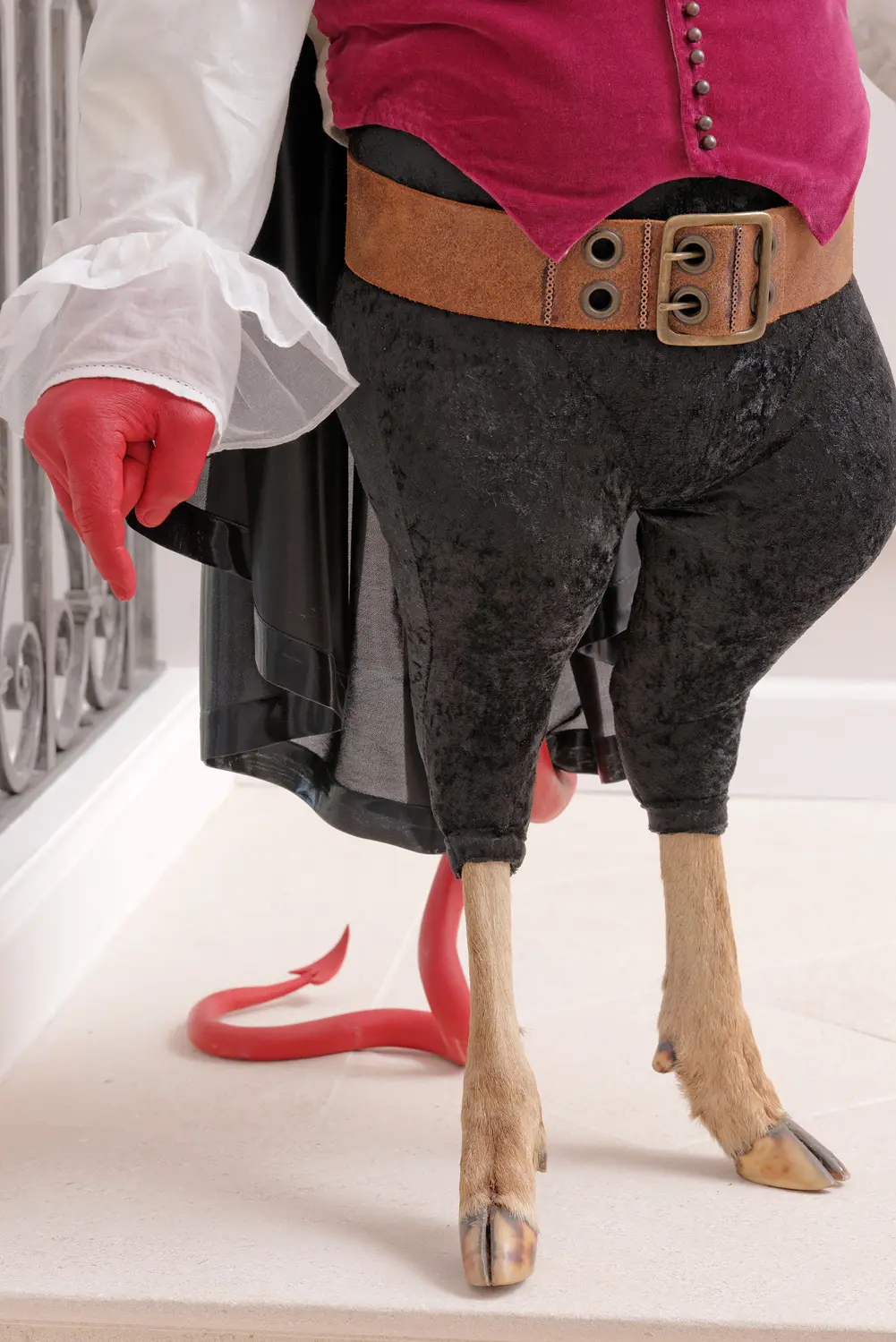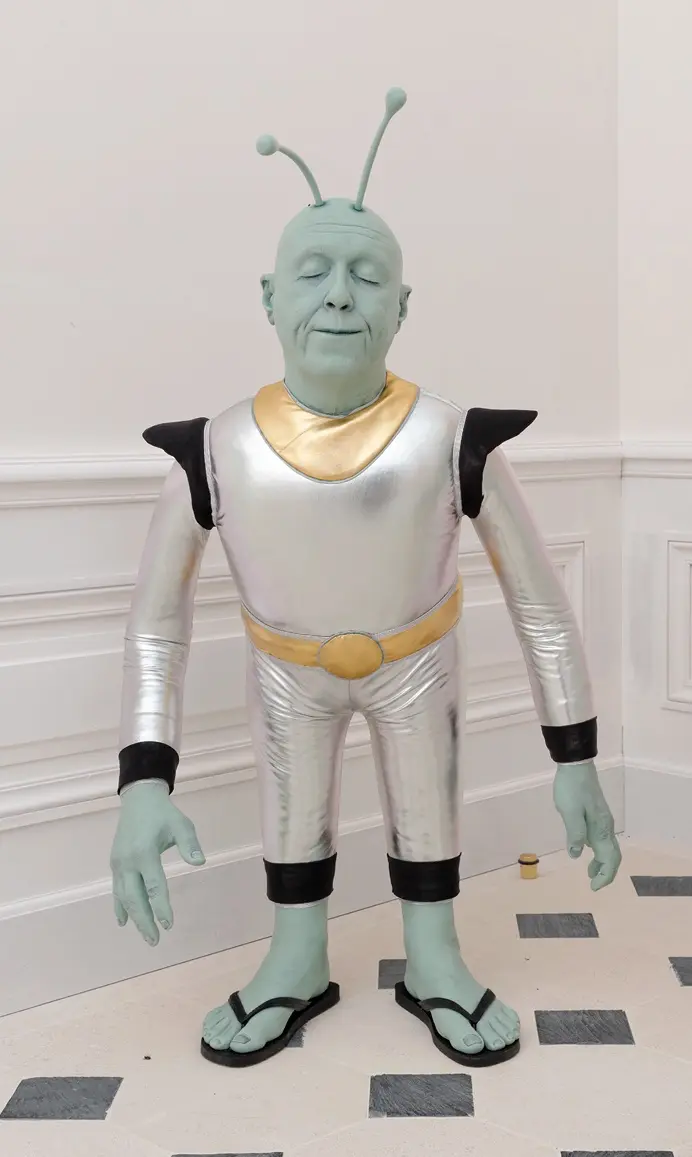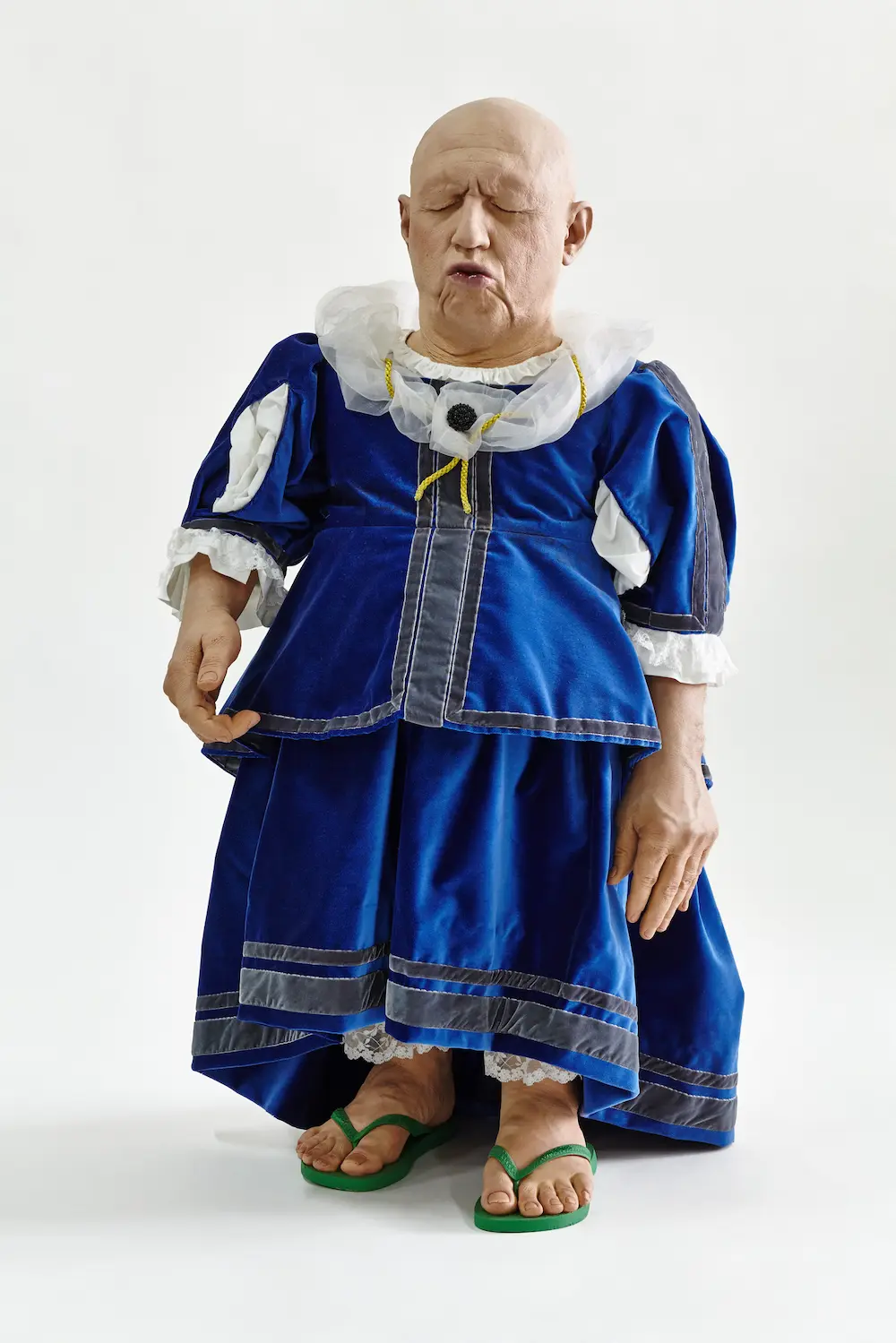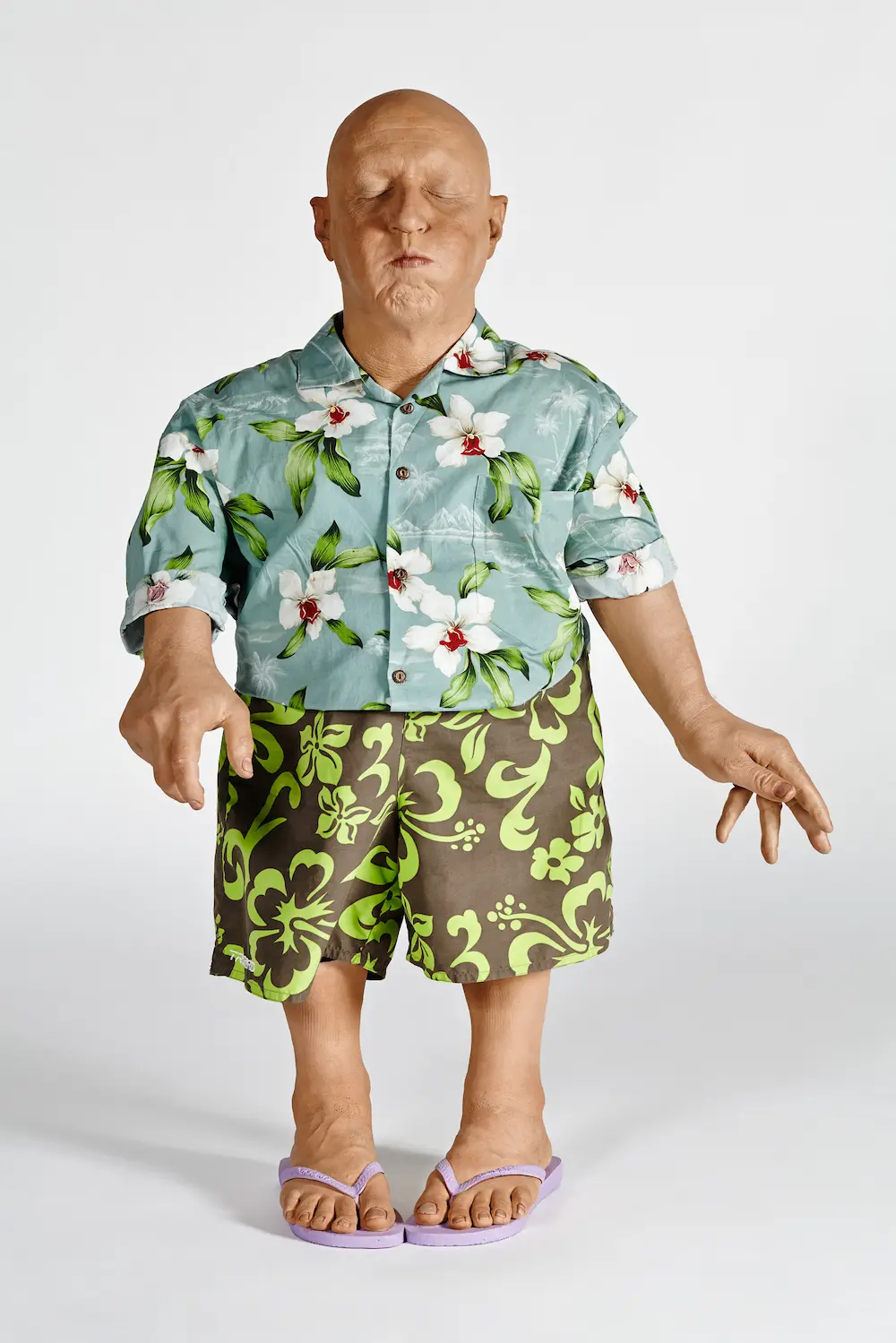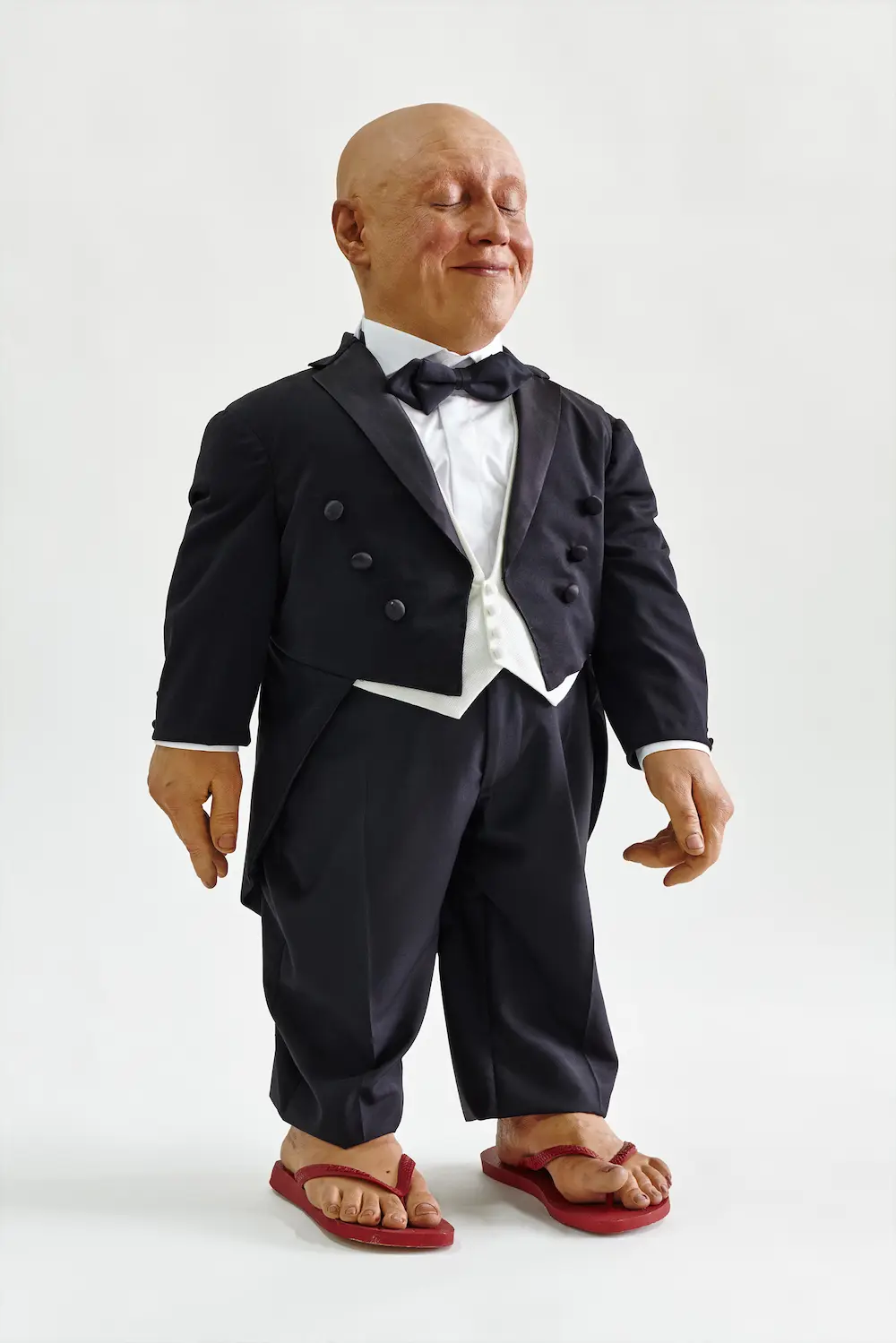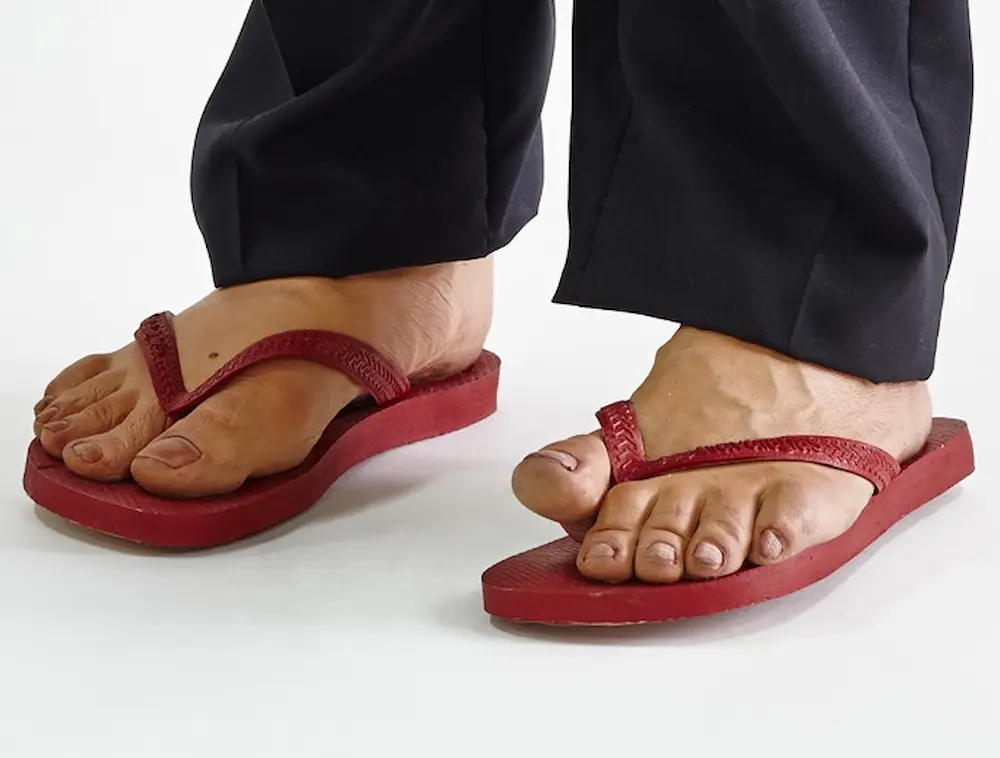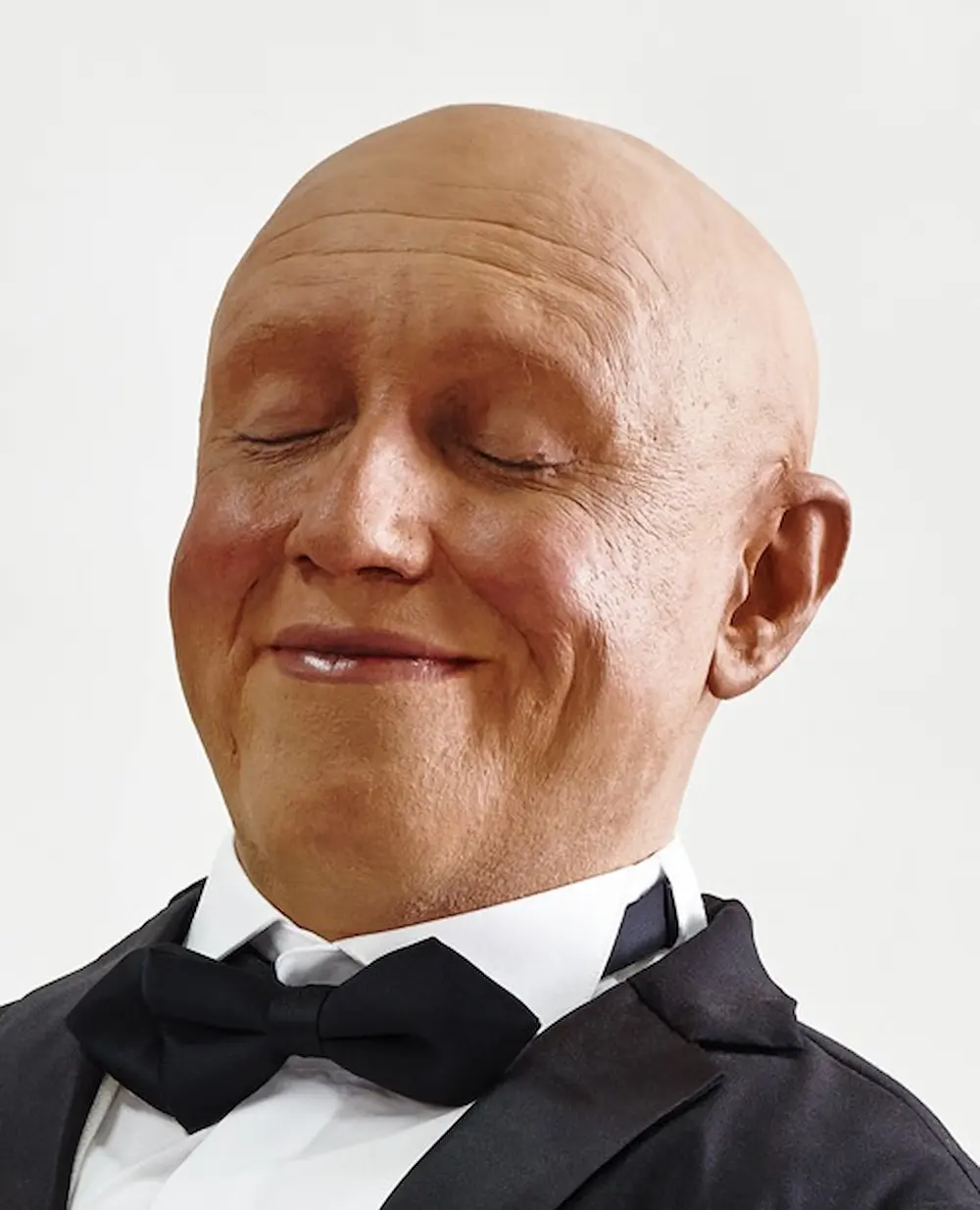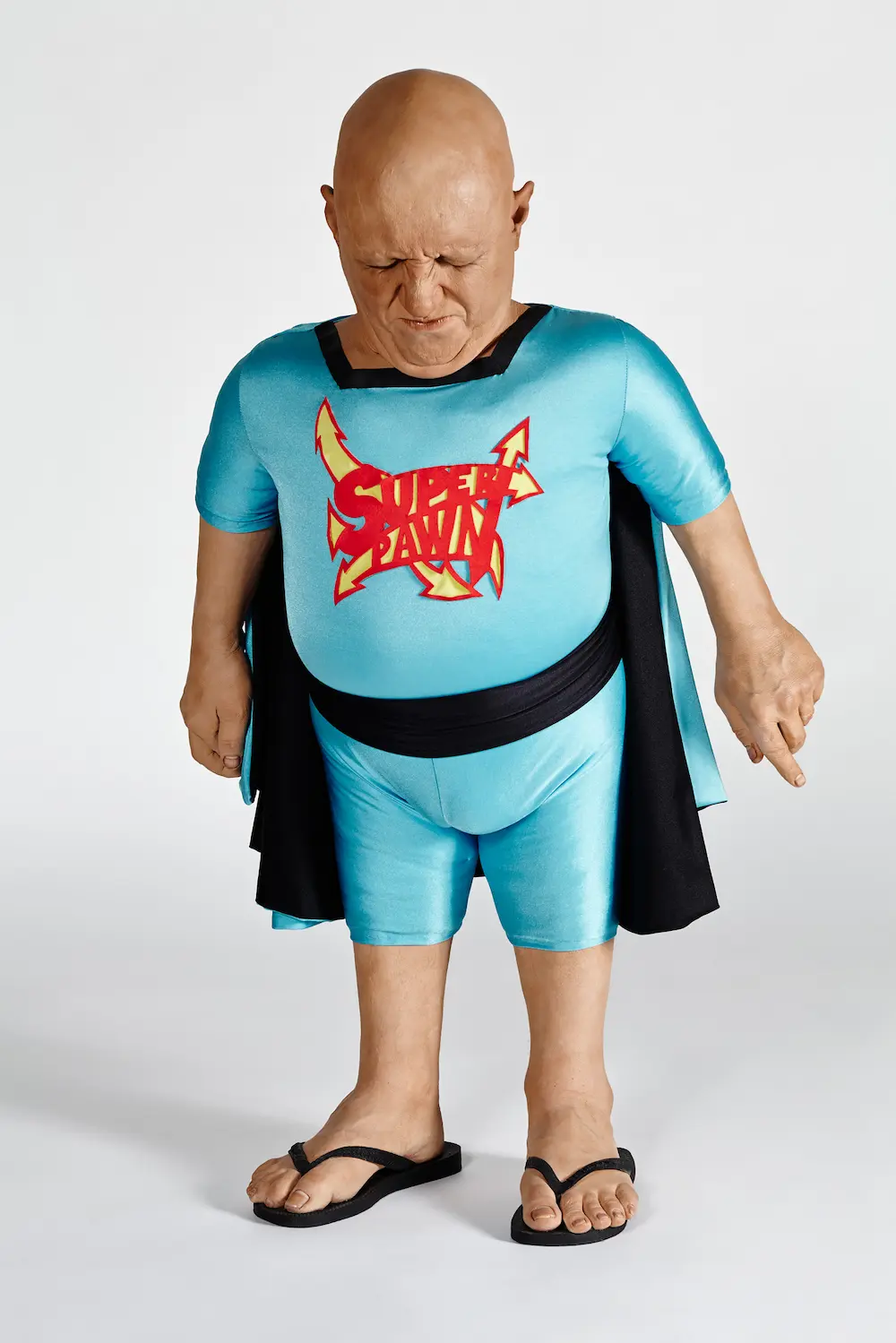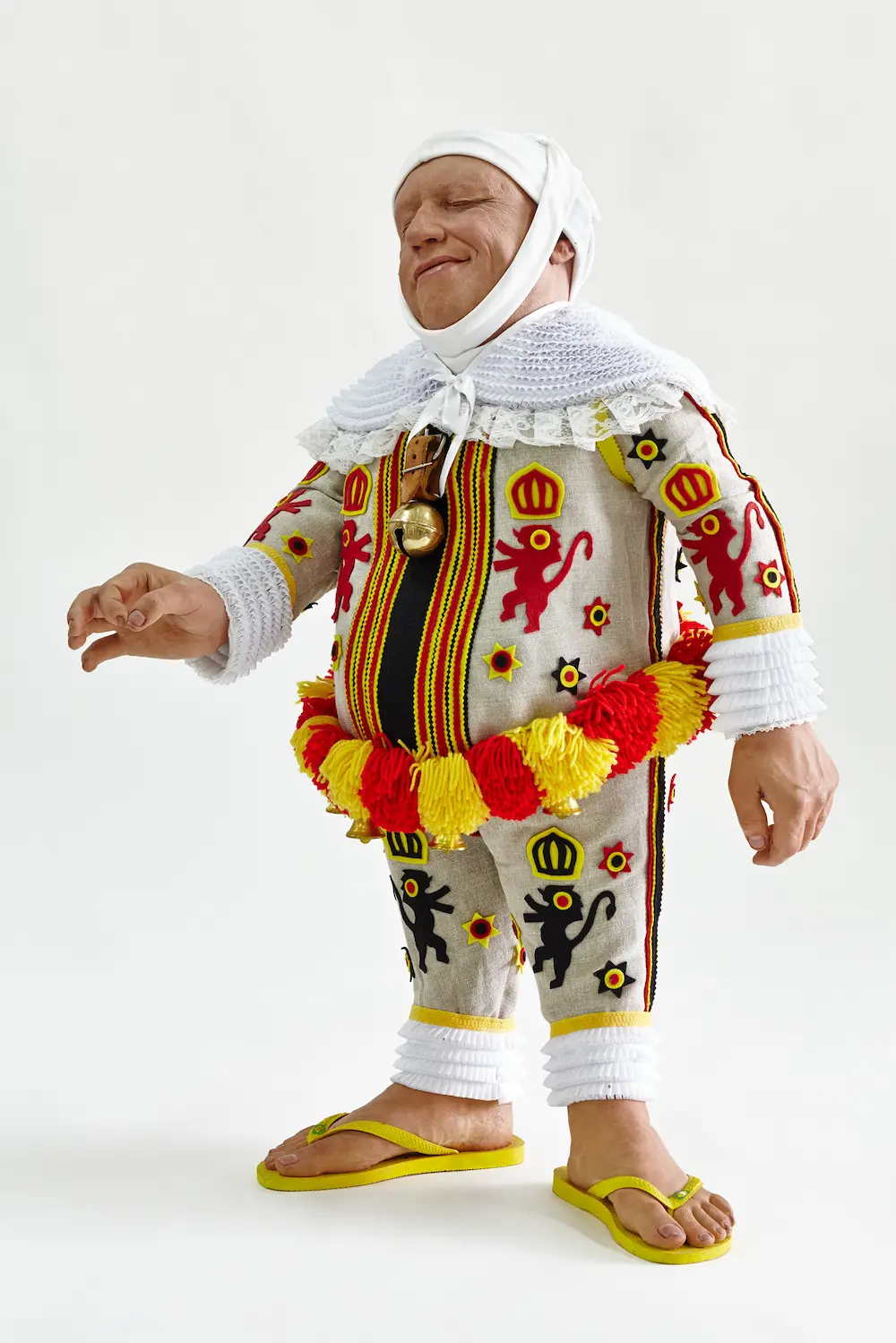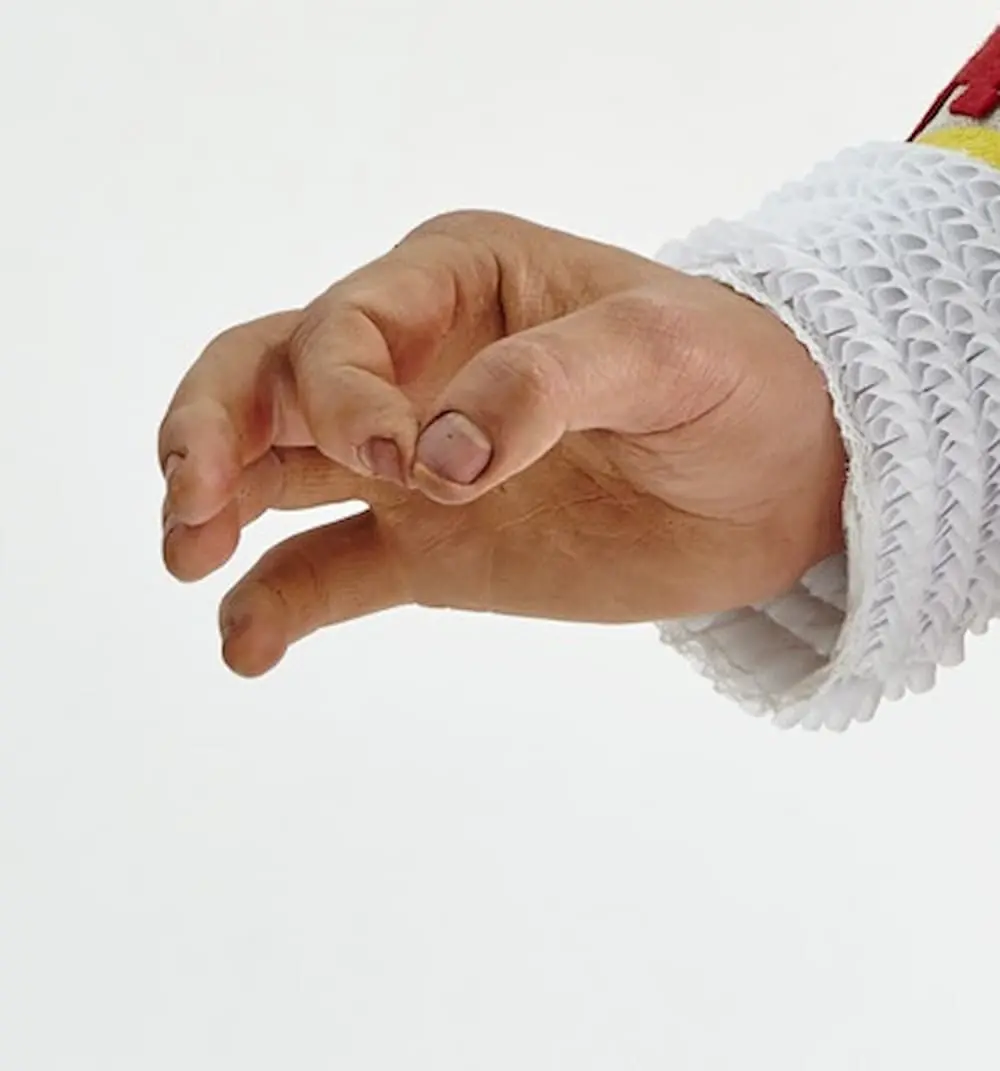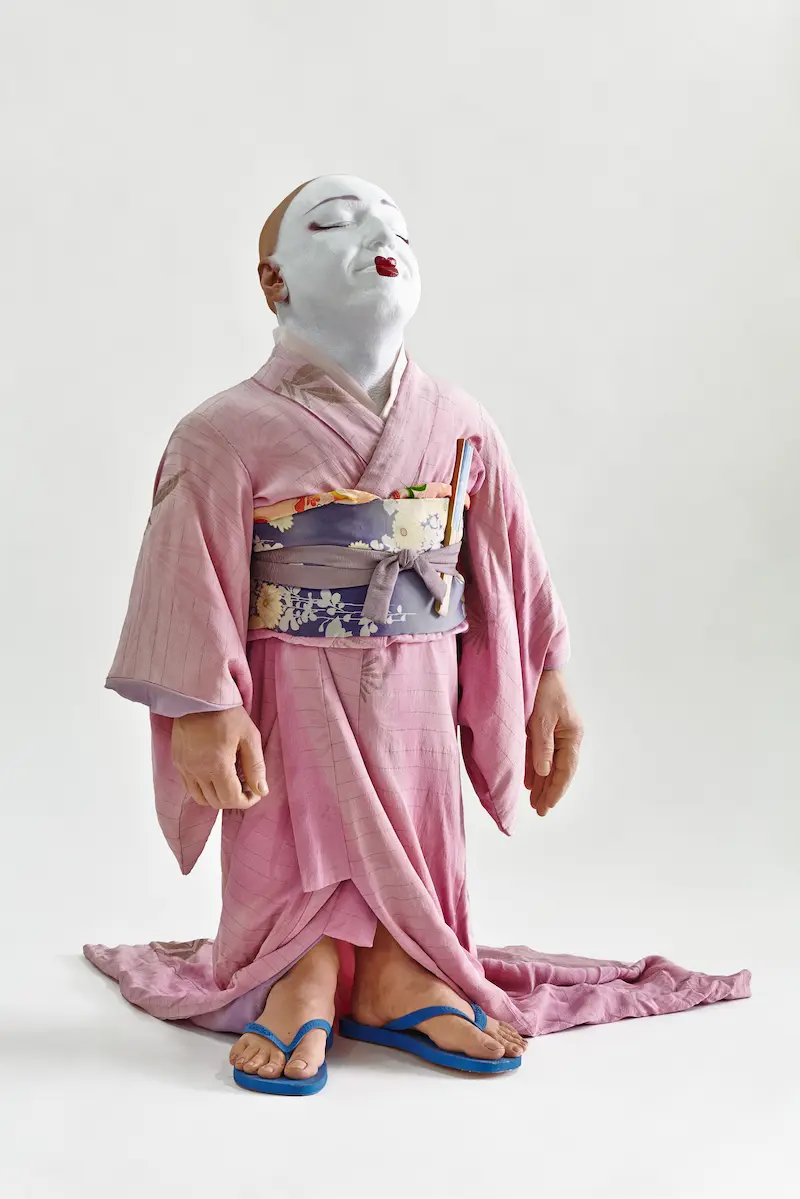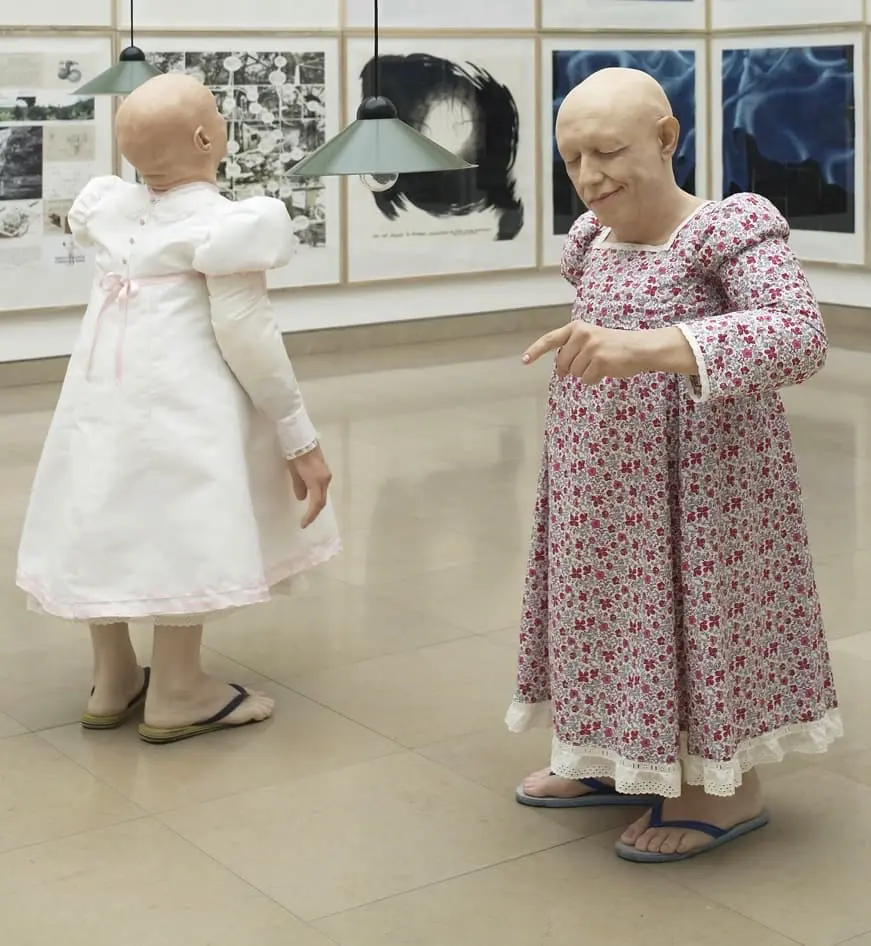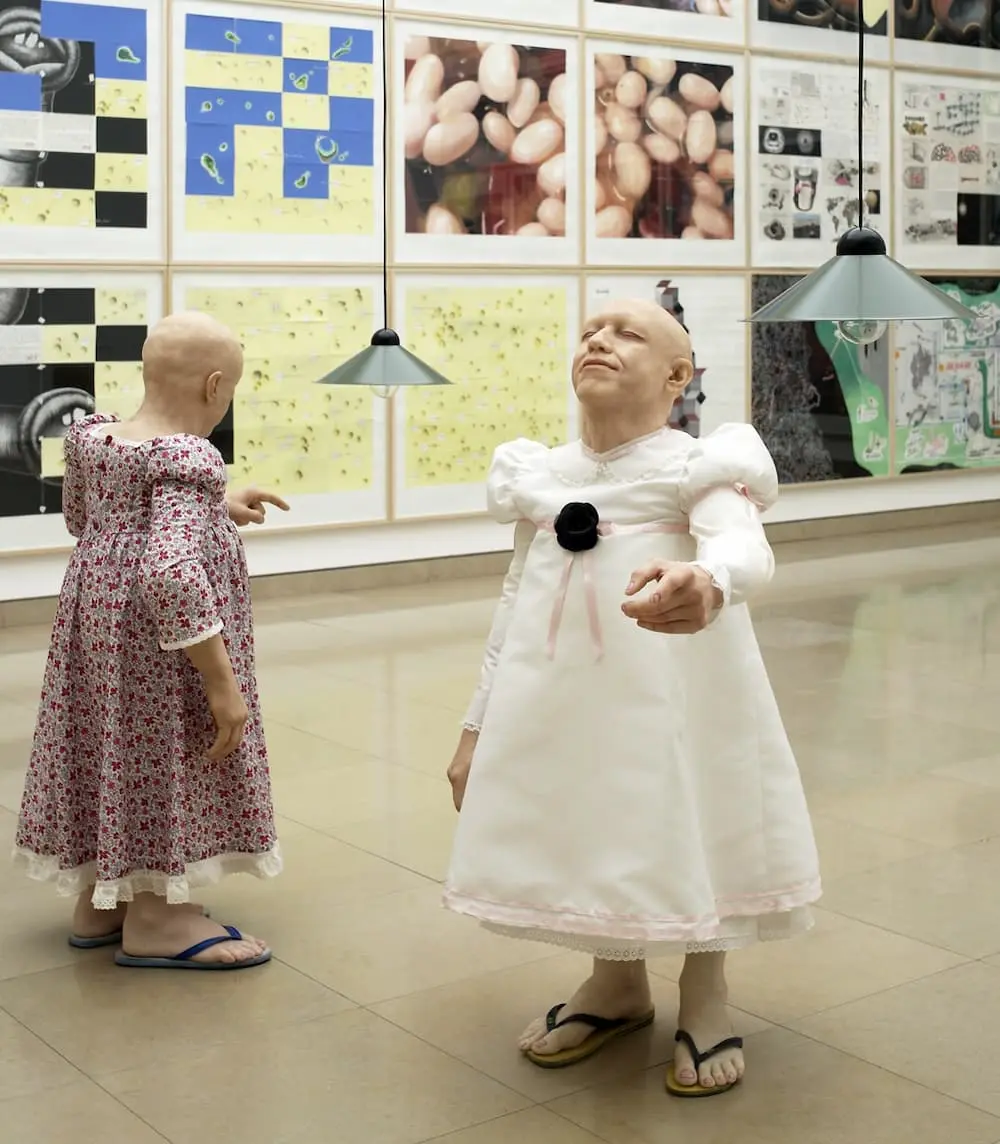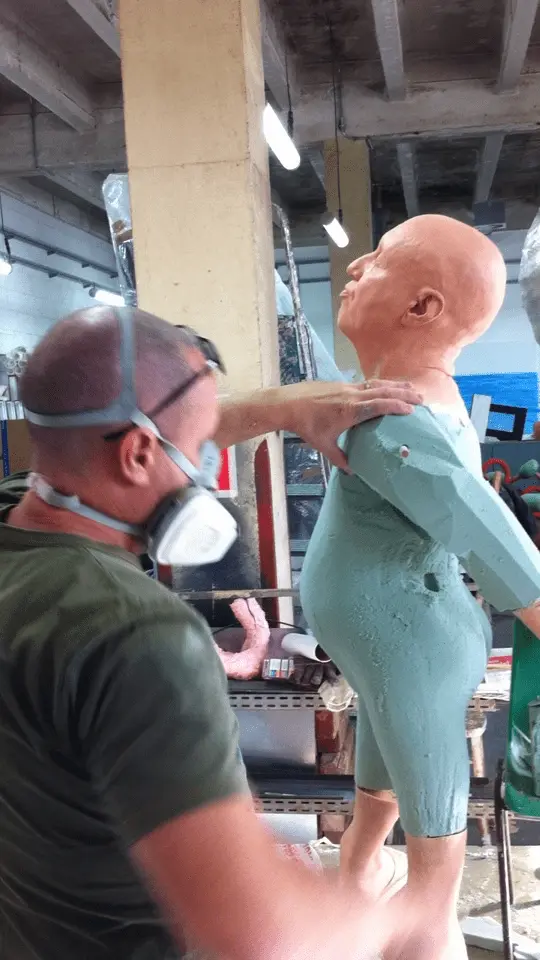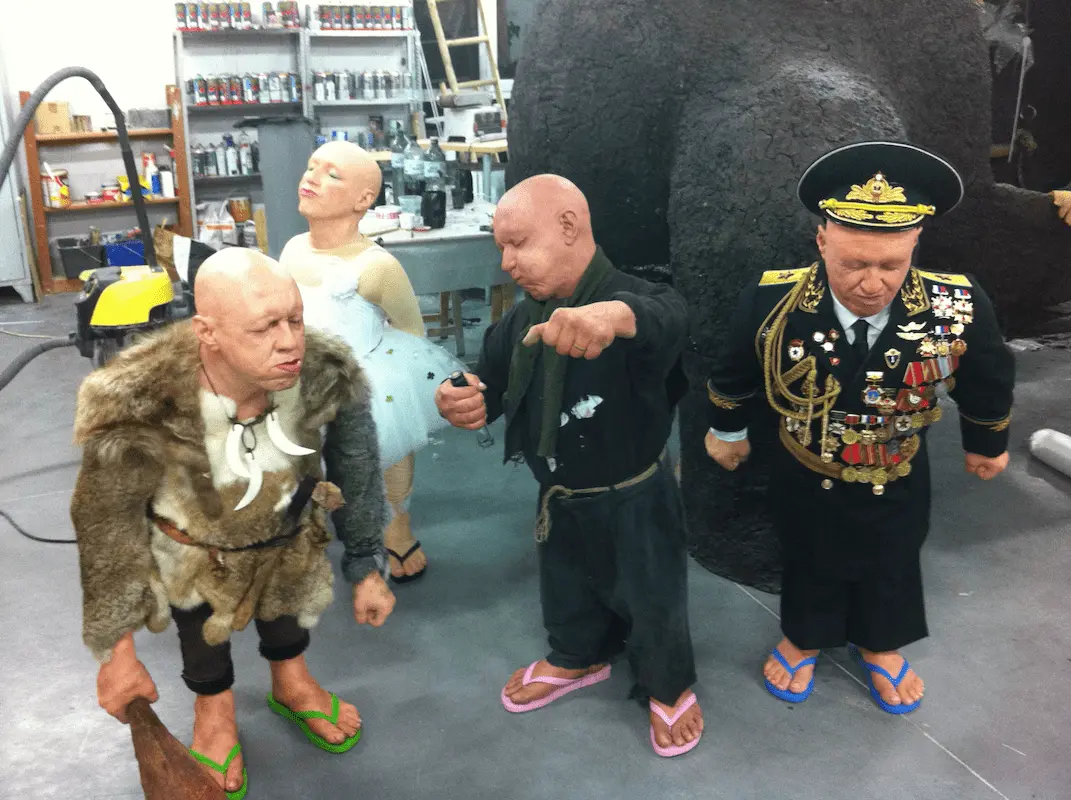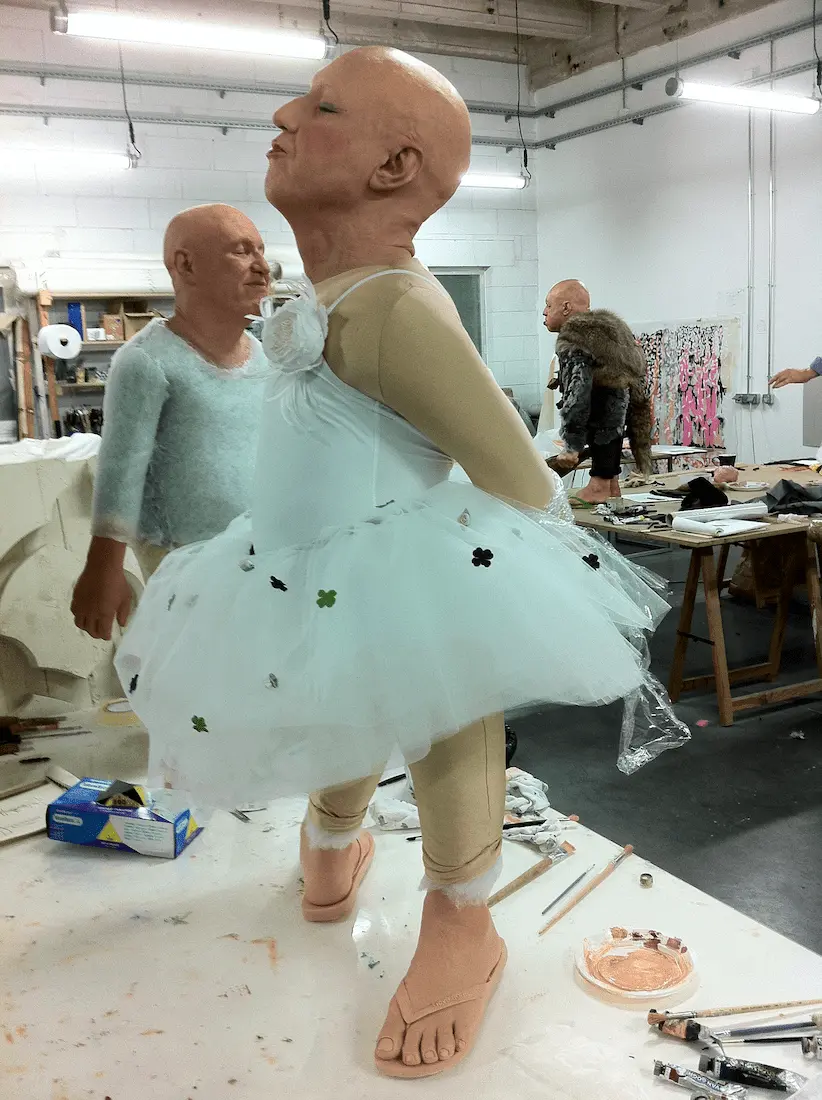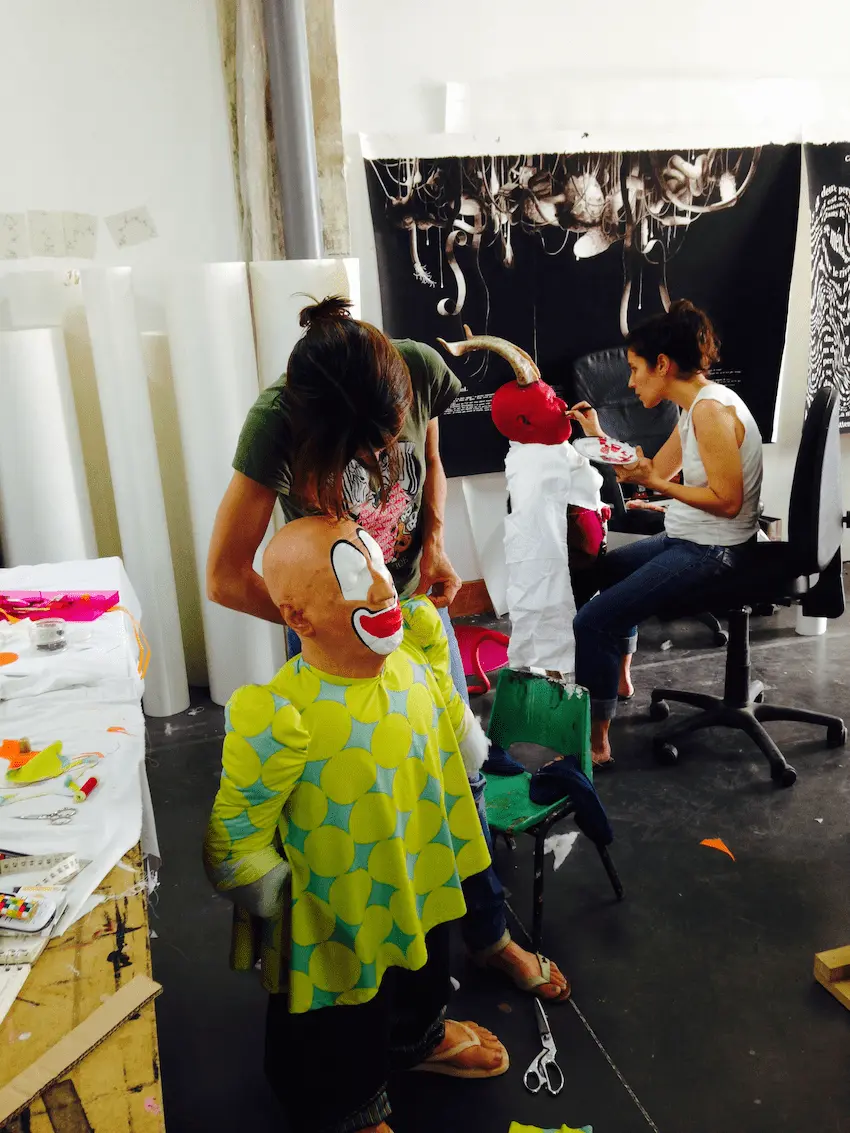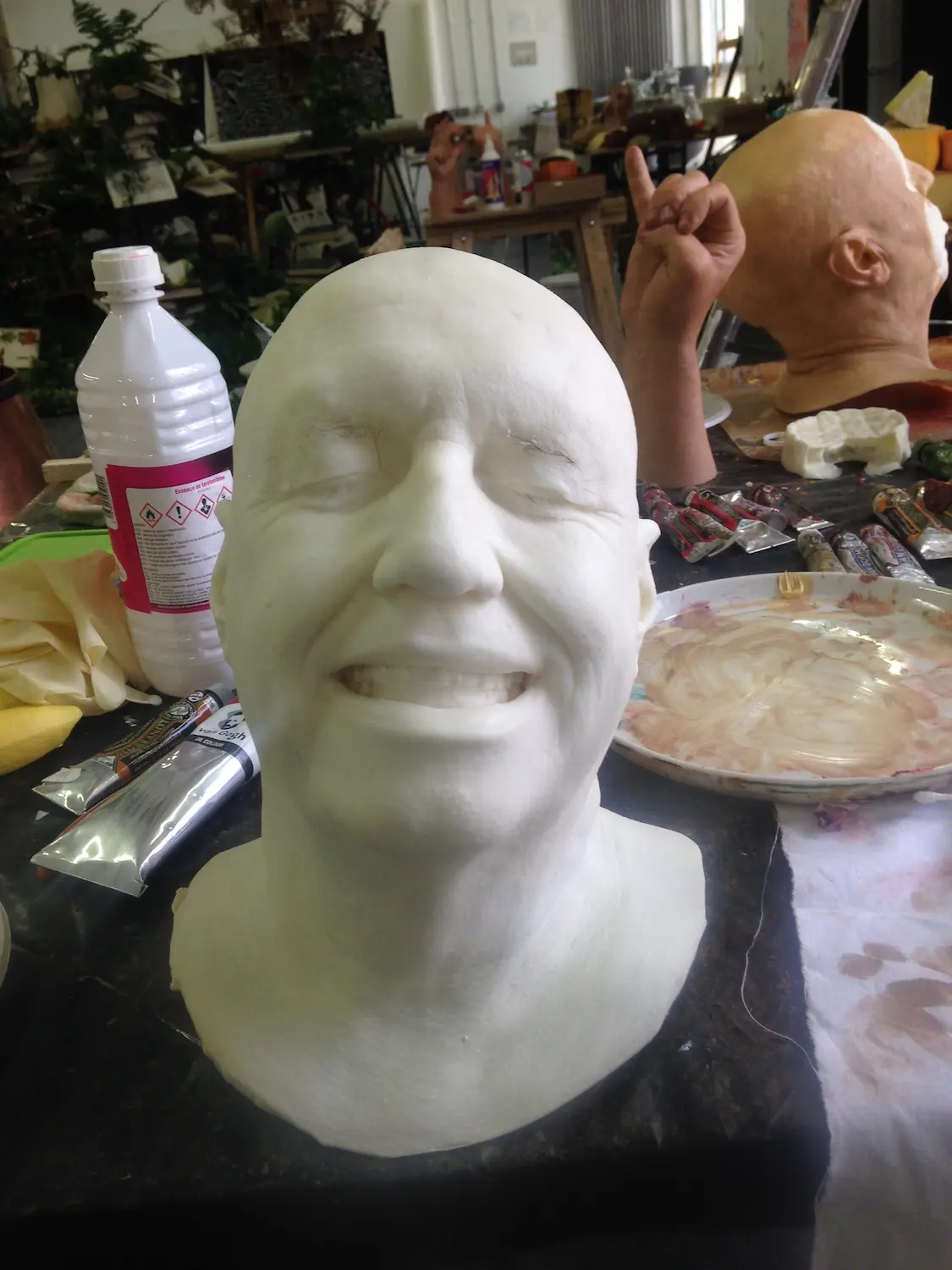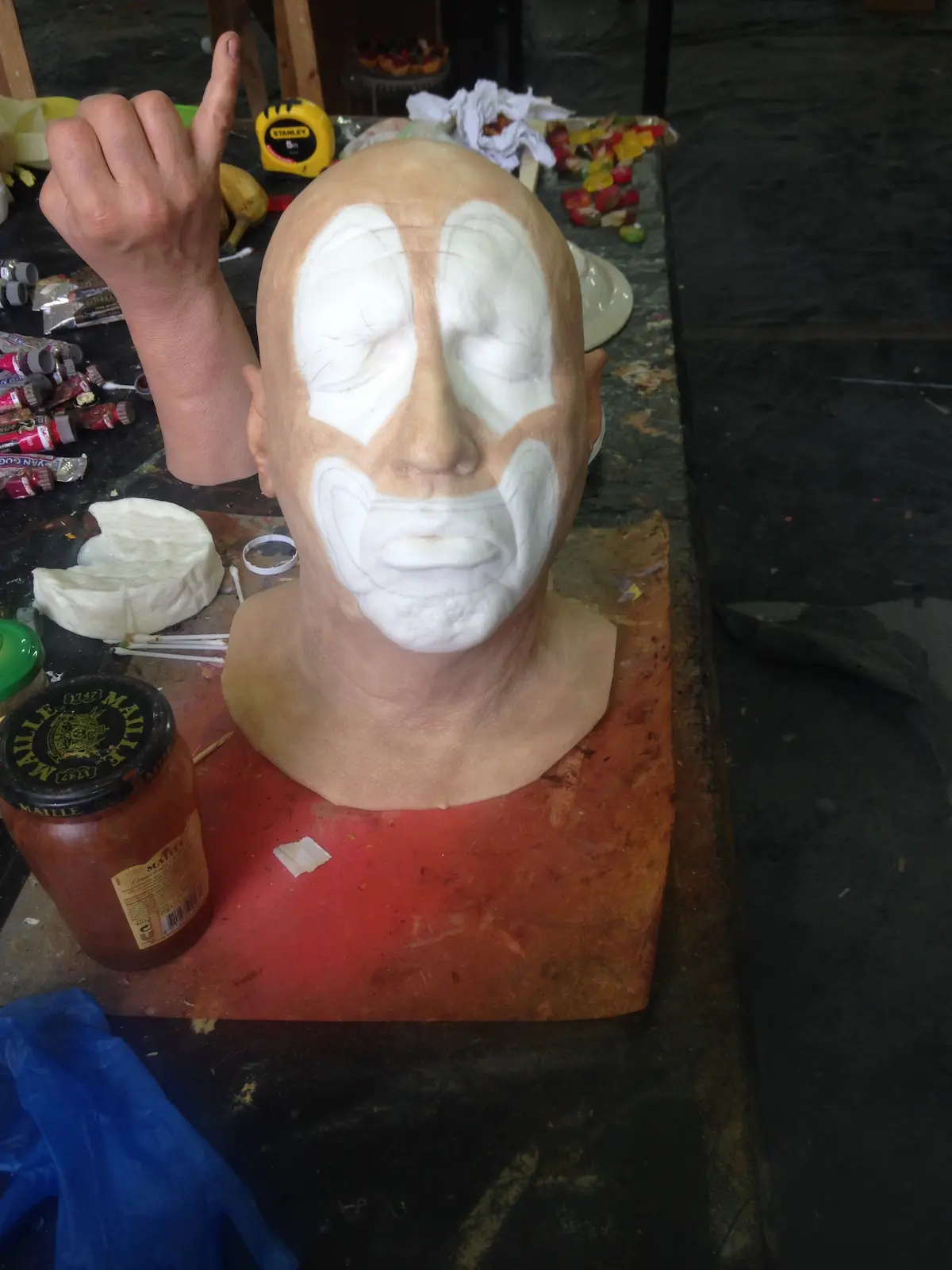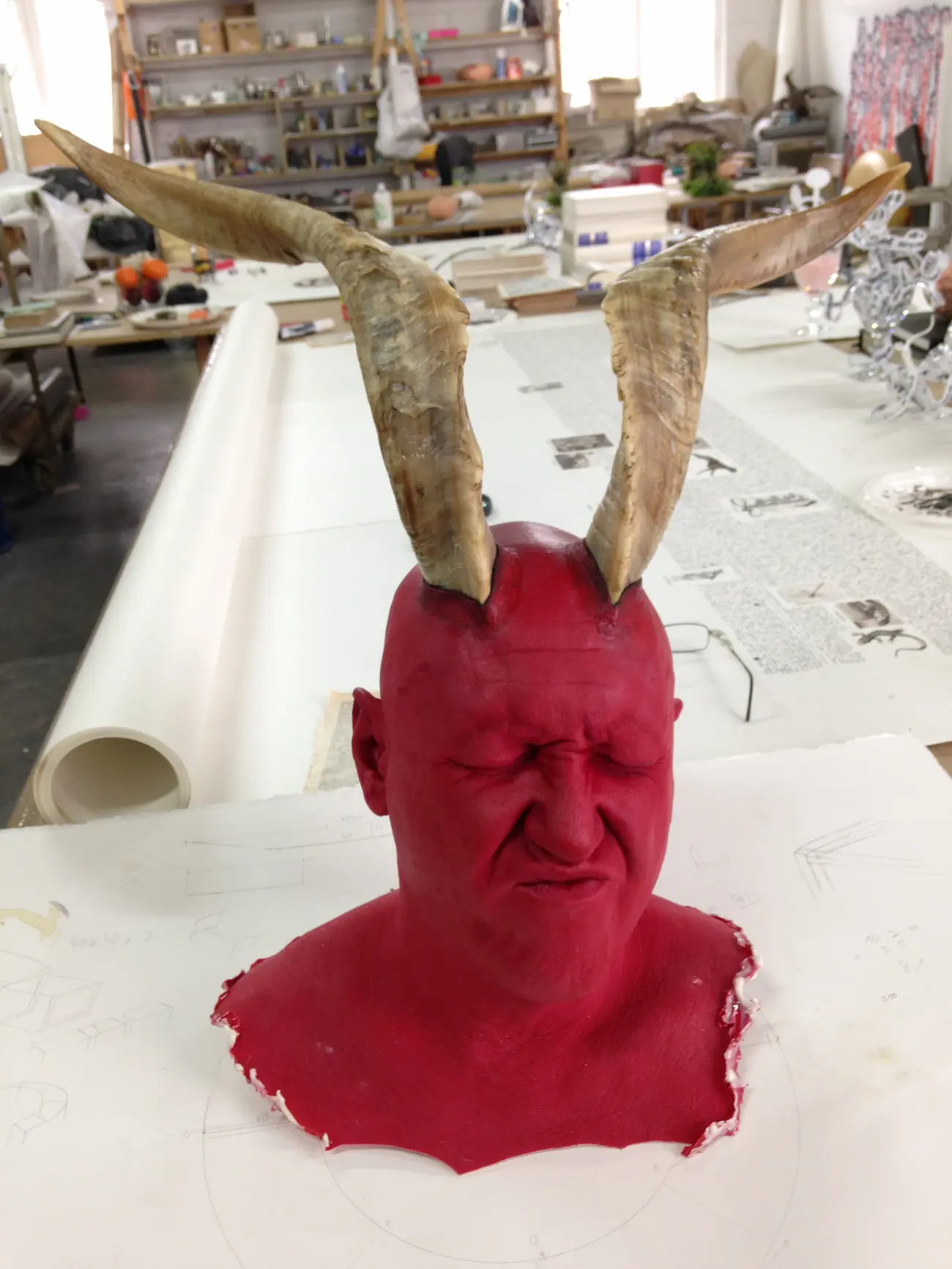Links to The Game of Life, Checkers, Clones.
Pawns
1992. Gilles Barbier inaugurates a working protocol whose simple, concise rules favor a “sideways” approach to art, ideas and work: a checkerboard, pawns, a displacement operator and statements. The layout of the game is very basic. The “pawn”, the real player, is still only a plaster figure, but very soon he’s delivering a host of ideas that need to be interpreted, processed and translated into objects, drawings, photographs, series, installations…
Read more
Better In the years that followed, Barbier worked to bring to life the abundance and variety of projects that were, so to speak, exploding. At the end of 1994, he attempted to formalize his singular approach with an installation entitled “Comment Mieux Guider Notre Vie au Quotidien” (How to Better Guide our Daily Life). The number of pawns increased to four, to compensate for the multitude of artistic scenarios taking shape. Gilles Barbier opted for a hyper-realistic representation in wax. At the time, the “Pawns” still wore a handle on their backs to make it easier for them to move around the checkerboard of possibilities.
Little by little, the pawns will abandon the checkerboard, the handle on the back and the protocol of the original game, to embark on a journey through the social and cultural corpus, through incarnations as multiple as they are extravagant. Through their identical replication, they remain attached to their original model, the artist: facial features, hands and feet faithfully molded onto this docile subject. The result is a journey through time, with the artist’s double, now a model, accompanying him as he ages. Although 30 years now separate the first “Pawns” from the last, the gap continues to widen, further disturbing the relationship to the same.
” The Emmentalist “, (second version), 2021. Mixed media, 105 cm high.
” The Emmentalist “, (second version), 2021. Mixed media, 105 cm high.
“The Emmentalist”, (detail of the hand), 2021. Mixed media, 105 cm high.
“The Emmentalist”, (detail of the hand), 2021. Mixed media, 105 cm high.
“ Tar and Feathers ” (second version), 2023. Mixed media, 245 cm high.
“ Tar and Feathers ” (second version), 2023. Mixed media, 245 cm high.
“ Tar and Feathers ” (second version, detail), 2023. Mixed media, 245 cm high.
“ Tar and Feathers ” (second version, detail), 2023. Mixed media, 245 cm high.
“ Tar and Feathers ” (second version, detail), 2023. Mixed media, 245 cm high.
“ Tar and Feathers ” (second version, detail), 2023. Mixed media, 245 cm high.
“Wonder Pawn”, (detail of face), 2021. Mixed media, 105 cm high.
“Wonder Pawn”, (detail of face), 2021. Mixed media, 105 cm high.
“The Little Dancer”, 2015. Mixed media, 105 cm high.
“The Little Dancer”, 2015. Mixed media, 105 cm high.
“The Little Dancer”, (detail), 2015. Mixed media, 105 cm high.
“The Little Dancer”, (detail), 2015. Mixed media, 105 cm high.
“The Little Dancer”, 2015. Mixed media, 105 cm high.
“The Little Dancer”, 2015. Mixed media, 105 cm high.
“The Little Dancer”, (detail), 2015. Mixed media, 105 cm high.
“The Little Dancer”, (detail), 2015. Mixed media, 105 cm high.
“Papuan” (first version), 2015. Mixed media, 270 cm high.
“ Papuan” (first version), 2015. Mixed media, 270 cm high.
“ Papuan” (face ), 2015. Mixed media, 250 cm high.
“ Papuan” (face ), 2015. Mixed media, 250 cm high.
“ Papuan” (second version), 2015. Mixed media, 250 cm high.
“ Papuan” (second version), 2015. Mixed media, 250 cm high.
“Still Pawn”, (detail of face), 2011. Mixed media, 105 cm high.
“Still Pawn”, (detail of face), 2011. Mixed media, 105 cm high.
“Still Pawn”, (detail of feet), 2015. Mixed media, 105 cm high.
“Still Pawn”, (detail of feet), 2015. Mixed media, 105 cm high.
“ Papuan” (third version), 2015. Mixed media, 250 cm high.
“ Papuan” (third version), 2015. Mixed media, 250 cm high.
“ Papuan” (face ), 2015. Mixed media, 250 cm high.
“ Papuan” (face ), 2015. Mixed media, 250 cm high.
“Tar and Feathers” (first version), 2015. Mixed media, 105 cm high.
“Tar and Feathers” (first version), 2015. Mixed media, 105 cm high.
“Tar and Feathers” (first version, detail of face), 2015. Mixed media, 105 cm high.
“Tar and Feathers” (first version, detail of face), 2015. Mixed media, 105 cm high.
“Imperator”, (detail), 2015. Mixed media, 105 cm high.
“Imperator”, (detail), 2015. Mixed media, 105 cm high.
“Imperator”, (detail), 2015. Mixed media, 105 cm high.
“Imperator”, (detail), 2015. Mixed media, 105 cm high.
“The Ancestor” (back), 2015. Mixed media, 250 cm high.
“The Ancestor” (back), 2015. Mixed media, 250 cm high.
“The Ancestor” (face detail), 2015. Mixed media, 250 cm high.
“The Ancestor” (face detail), 2015. Mixed media, 250 cm high.
“Papam”, (second version), 2014. Mixed media, 155 cm high.
“Papam”, (second version), 2014. Mixed media, 155 cm high.
“Papam”, 2015. (Detail). Mixed media, 105 cm high.
“Papam”, 2015. (Detail). Mixed media, 105 cm high.
“Supreme Soviet”, (detail of face), 2014. Mixed media, 105 cm high.
“Supreme Soviet”, (detail of face), 2014. Mixed media, 105 cm high.
“Papam”, (first version), 2014. Mixed media, 155 cm high.
“Papam”, (first version), 2014. Mixed media, 155 cm high.
“Papam”, 2015. (Detail). Mixed media, 105 cm high.
“Papam”, 2015. (Detail). Mixed media, 105 cm high.
“ Drunkard ”, (detail), 2013. Mixed media, 105 cm high.
“ Drunkard ”, (detail), 2013. Mixed media, 105 cm high.
“Supreme Soviet”, (first version), 2012. Mixed media, 105 cm high.
“Supreme Soviet”, (first version), 2012. Mixed media, 105 cm high.
‘The Emmentalist’, (first version), 2013. Mixed media, 105 cm high.
‘The Emmentalist’, (first version), 2013. Mixed media, 105 cm high.
“Geisha”, (detail of face) 2010. Mixed media, 105 cm high.
“Geisha”, (detail of face) 2010. Mixed media, 105 cm high.
“Devil”, (sideways), 2013. Mixed media, 105 cm high.
“Devil”, (sideways), 2013. Mixed media, 105 cm high.
“Devil”, (Face detail), 2013. Mixed media, 105 cm high.
“Devil”, (Face detail), 2013. Mixed media, 105 cm high.
“Devil”, (Detail Feet), 2013. Mixed media, 105 cm high.
“Devil”, (Detail Feet), 2013. Mixed media, 105 cm high.
“The Lord”, (detail of feet), 2011. Mixed media, 105 cm high.
“The Lord”, (detail of feet), 2011. Mixed media, 105 cm high.
“The Lord”, (detail of face), 2011. Mixed media, 105 cm high.
“The Lord”, (detail of face), 2011. Mixed media, 105 cm high.
“Gille, (detail of the hand) 2010. Mixed media, 105 cm high.
“Gille, (detail of the hand) 2010. Mixed media, 105 cm high.
